

Famous Ship Paintings – Best Nautical Paintings of Ships at Sea
Paintings of ships at sea are among the iconic artworks in the world. For centuries, numerous civilizations ruled the world’s waters, sending commercial vessels and ships of war out into the blue horizon; as a result, marine art emerged to depict these adventures and battles. Today, we will celebrate these famous ship paintings and boat paintings by giving them a deeper look.
Table of Contents
- 1.1 The Storm on the Sea of Galilee (1633) by Rembrandt
- 1.2 The Home Fleet Saluting the State Barge (1650) by Jan van de Cappelle
- 1.3 Nelson’s Inshore Blockading Squadron at Cadiz (1797) by Thomas Buttersworth
- 1.4 Battle of Trafalgar (1805) by Louis Philippe Crepin
- 1.5 A First Rate Man-of-War Driven Onto a Reef of Rocks, Floundering in a Gale (1826) by George Philip Reinagle
- 1.6 The Fighting Temeraire (1839) by J. M. W. Turner
- 1.7 Becalmed off Halfway Rock (1860) by Fitz Hugh Lane
- 1.8 Red Boats, Argenteuil (1875) by Claude Monet
- 1.9 Breezing Up (A Fair Wind) (1876) by Winslow Homer
- 1.10 Fishing Boats on the Beach at Saintes-Maries (1888) by Vincent van Gogh
- 2.1 Why Are Paintings of Ships at Sea Such a Popular Topic?
- 2.2 What Do Famous Ship Paintings Portray?
Our Favorite Famous Ship Paintings
Nautical paintings commemorate the incredible vessels that once sailed the seas, as well as more subdued sailboat paintings. Over time, these vessels became the lifeline of the economies of nations such as the United Kingdom and Portugal, with their sailors carrying and delivering valuable goods of various types. For over a thousand years, ships of diverse kinds and sizes have sailed the oceans.
Part of what inspires the adoration of so many art lovers and aficionados, especially in coastal areas, is the contrast between brilliant man-made ships and the unpredictability and dangers of the ocean and Mother Nature herself.
Many painters have experimented with creating nautical paintings and their legendary sea excursions throughout history, with others specializing entirely in the theme of nautical travel. Here are our favorite paintings of ships at sea.
The Storm on the Sea of Galilee (1633) by Rembrandt
This well-known marine artwork was looted in 1990 from the Isabella Stewart Gardner Museum. The boat painting’s whereabouts are still unknown, and it might never be found again. However, there is some debate around the work. It has been the focus of various theft-related investigations ever since it vanished. During the 1630s, just as Rembrandt arrived in Amsterdam to start his professional career, he created what many believe to be his most dramatic works.
This artwork is an example of this period. Rembrandt picked a Bible narrative to demonstrate the seriousness of his creative ambitions.
Rembrandt moved to Amsterdam with the intention of being recognized for his historical artworks and portraits. Using a New Testament narrative, he illustrated how to blend a historical picture with a seascape. This New Testament incident would have been recognizable to Rembrandt’s contemporaries and, more than likely, admired by them. The suspense produced in the picture, on the other hand, would present the narrative with a totally new and surprising interpretation. This example of innovation and risk-taking by Rembrandt, then 27 years old, set him apart from his colleagues and became the foundation of his creative growth.
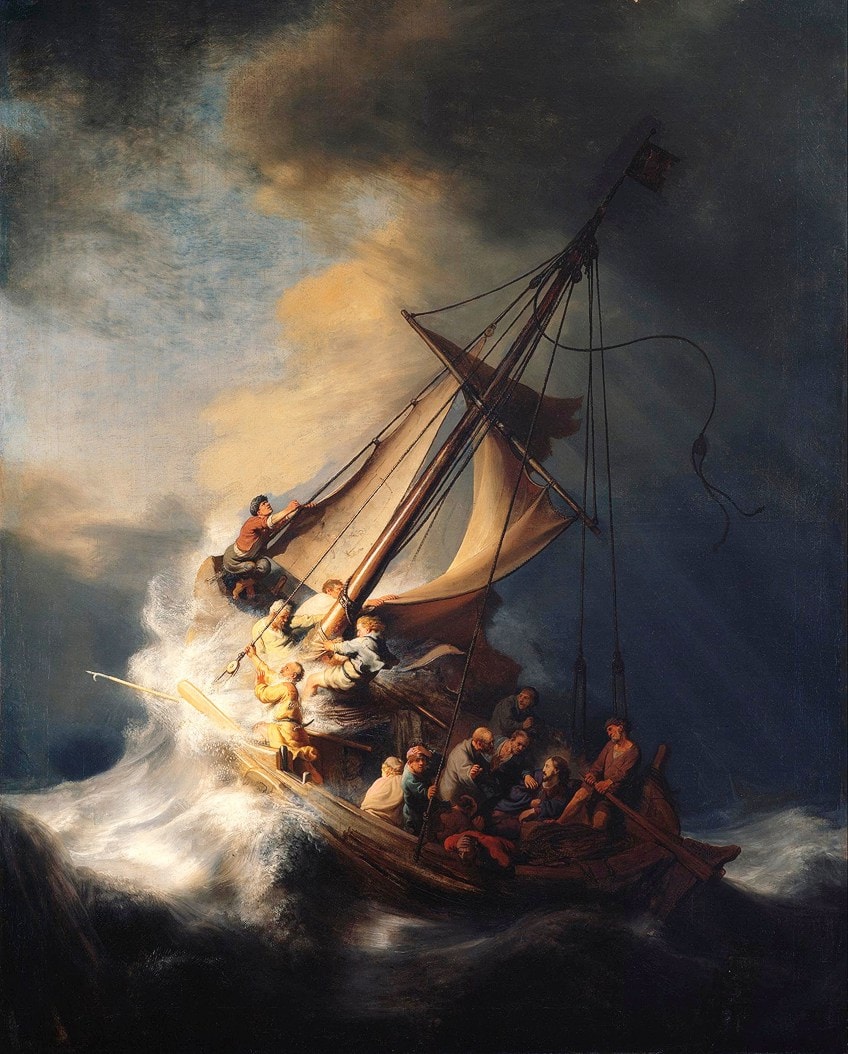
The Home Fleet Saluting the State Barge (1650) by Jan van de Cappelle
As numerous pilgrims and travelers journeyed to the New World across the Atlantic Ocean in the mid-1600s, seafaring transportation was responsible for shaping the world’s individuals and nations. In his 1650 marine artwork, Jan van de Cappelle caught one significant event from this time period. The picture portrays a variety of ships gathered in a port to honor a major vessel as it set off on its trip.
Cappelle’s artwork is considered among the most famous ship paintings because he captures the water’s capacity to reflect events above its surface in exquisite clarity.
Jan van de Cappelle was a painter of winter landscapes and paintings of ships at sea from the Dutch Golden Age , as well as an entrepreneur and art collector. He is widely regarded as the greatest marine artist of 17th-century Holland.
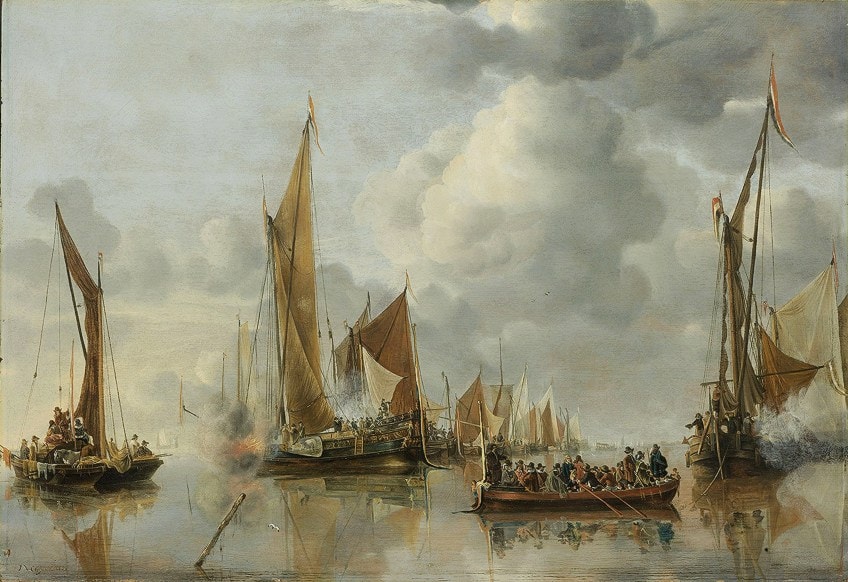
Nelson’s Inshore Blockading Squadron at Cadiz (1797) by Thomas Buttersworth
During the second part of the 18th century, the British Royal Navy was at the pinnacle of its nautical power throughout most of Europe and the rest of the world. During this period, the nation’s formidable navy fought in several conflicts off the coast of Portugal as the two countries competed for supremacy of the waterways around coastal Europe and other regions of the Atlantic. In 1797, Thomas Buttersworth produced this picture commemorating a decisive naval fight for British forces off the coastline of Portugal.
Following the historic Battle of St. Vincent, Nelson and ten bargemen were conducting a night attack against Spanish gunboats.
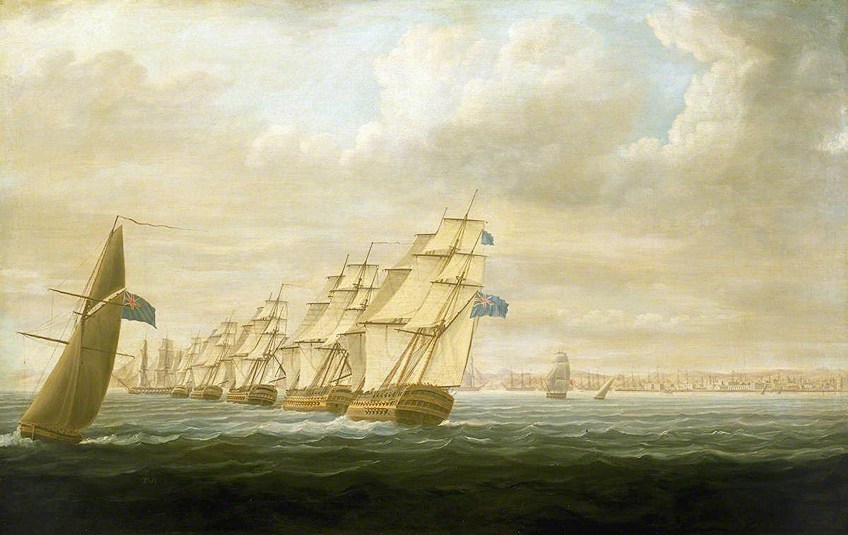
Battle of Trafalgar (1805) by Louis Philippe Crepin
A number of the most famous ship paintings depict bloody sea conflicts between formidable naval forces. This is true of Louis Phillipe Crepin’s 1805 work. This picture shows one of the most well-known naval battles, which occurred in the year the artwork was made. The fight faced the formidable British Royal Navy against two other worthy adversaries—the French and Spanish naval forces—who had collaborated to try to overthrow the overwhelming force that had controlled the waterways surrounding Europe and most of the world at the time.
Crepin’s picture depicts the close-quarters warfare that was common in naval conflicts with exceptional precision.

A First Rate Man-of-War Driven Onto a Reef of Rocks, Floundering in a Gale (1826) by George Philip Reinagle
The early 1800s were most likely the peak of the legendary ship painting era. George Philip Reinagle was a well-known marine artist noted for his ability to portray the character of the sea’s often violent nature that has wrecked so many big, strong ships throughout history.
His 1826 masterpiece is adequately titled since it depicts a ship caught in the grasp of the surging sea.
One of the most exciting features of maritime travel was the risk that mariners may perish if caught in a raging storm, sometimes known as a gale. This work is famous for Reinagle’s ability to capture the massive, crushing power of the waves, as well as the sea spray whipped up by the fierce winds. This piece serves as a sobering reminder that not all marine exploration and adventure are safe.
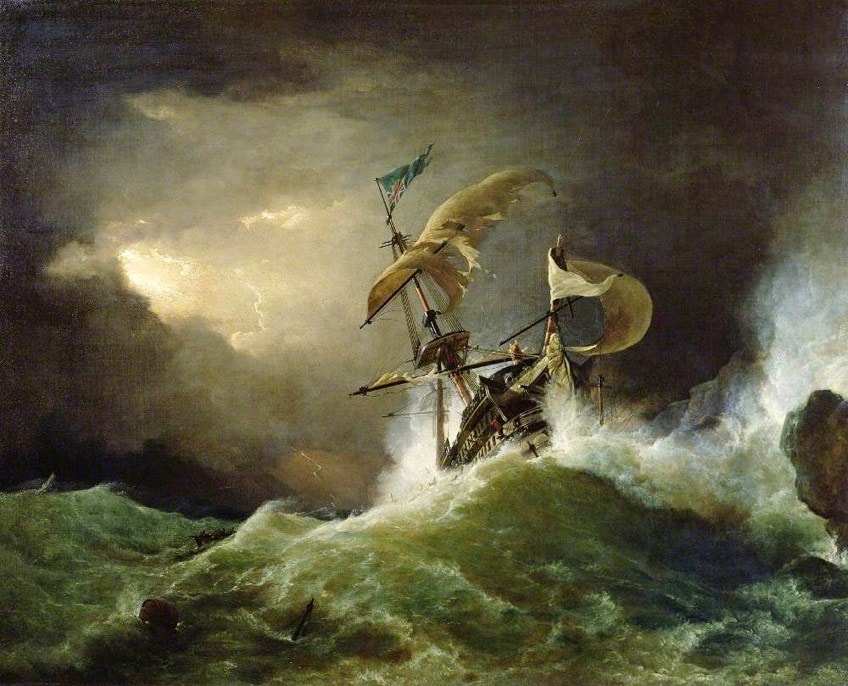
The Fighting Temeraire (1839) by J. M. W. Turner
The early industrial revolution is suggested by the marine artwork’s surroundings. Even though the sky is illuminated, a tugboat is rushing to assist. The tugboat stands for the new era of steam, coal, and fire. Turner’s own emotions and imagination are revealed in the image, which is intriguing and romantic. Although it is difficult to determine the painting’s message, it is unquestionably an important symbol of its time.
Turner’s boat painting features opposing hues that give it a magical or ethereal appearance. In contrast to the gloomy sky, the tugboat pops out.
A little portion of the painting’s bottom is taken up by the water, striking a balance between the sky and water. The Fighting Temeraire , while not well-liked in its day, has grown in popularity over time. A significant character in British art history, John Ruskin, spoke favorably of the piece. Although the artwork was eventually taken off the auction board, many reviewers, including Turner himself, praised it as a masterpiece. Nevertheless, Turner kept promoting his work despite the numerous unfavorable reviews.
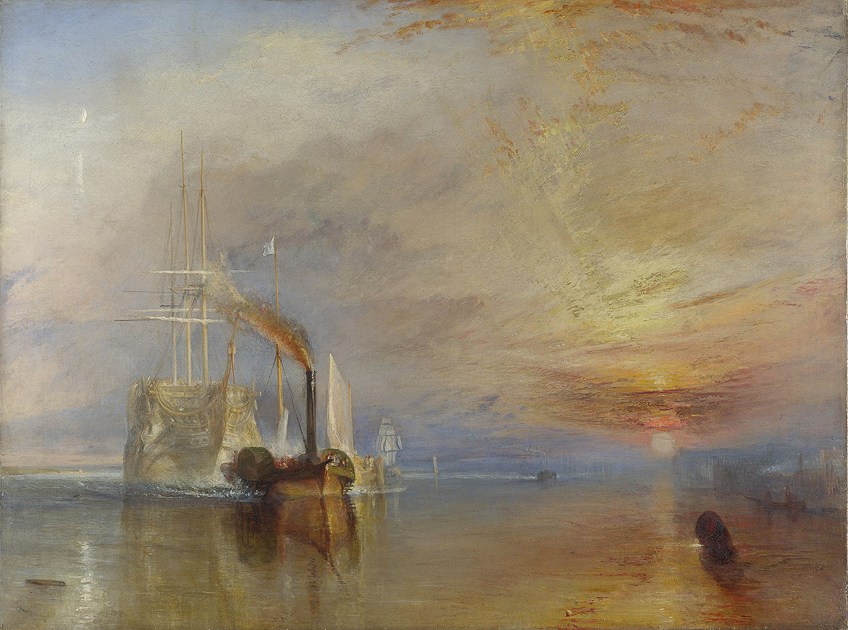
Becalmed off Halfway Rock (1860) by Fitz Hugh Lane
Several of the most famous ship paintings ever made depict warships engaged in furious conflicts or stuck in tremendous gales on the wide sea. There are, though, a few significant nautical paintings that reflect the placid, quiet character of the ocean or coastal regions. This piece portrays ships tied around Halfway Rock, a prominent maritime landmark located roughly halfway between Cape Ann and Boston.
This place was a popular stopping point for commercial vessels and supply ships since it allowed them to connect with other ships and conduct many forms of maritime commerce at a precise spot.
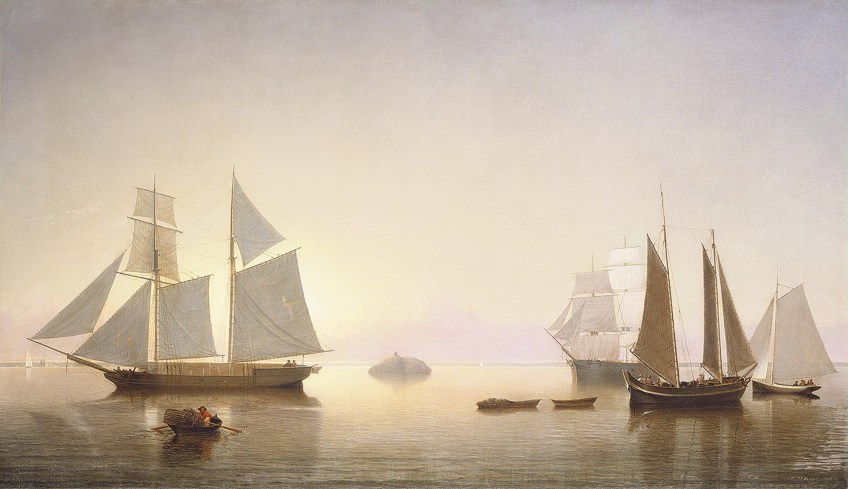
Red Boats, Argenteuil (1875) by Claude Monet
Monet depicted the town and outlying areas of Argenteuil during the 1870s, creating images of harmony and beauty that were sometimes at odds with the realities of the time. Despite his belief in en Plein air painting , Monet painstakingly selected the components he wanted to incorporate and often completed his works in the studio.
His works include no hints of the contamination of the river at Argenteuil or the chaos of a community pushing all into its industry.
Monet created the composition in this painting by using boats, particularly the verticals of the masts. Again, he used contrasting colors in the form of oranges, blues, greens, and reds. The painting is vibrant with color, and the blues and purples depict the depth of the sea.
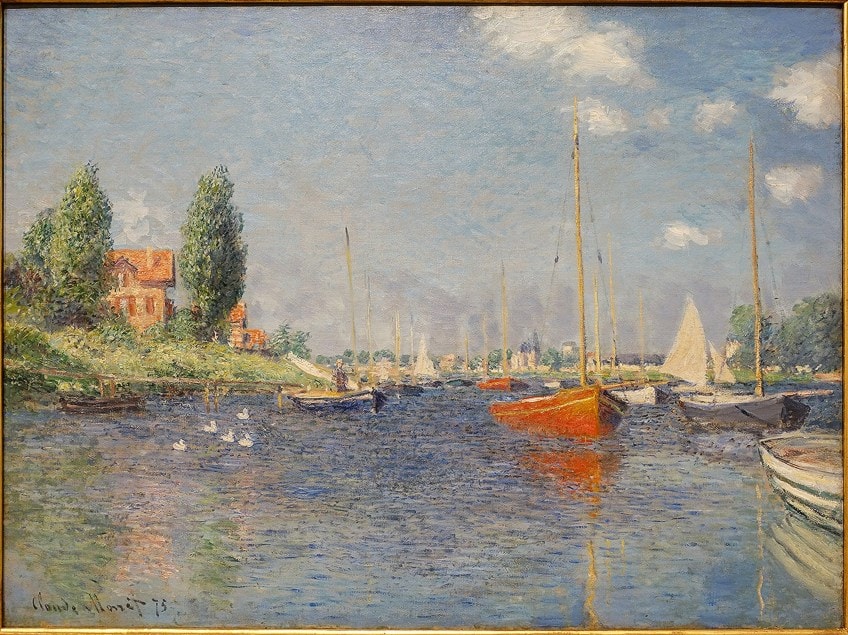
Breezing Up (A Fair Wind) (1876) by Winslow Homer
After visiting Massachusetts, where he first painted in watercolor, Homer started this painting in New York in 1873. He utilized the sketches he made there to create an oil painting that he worked on for three years. Infrared reflectography has shown the several composition modifications he made during this period, including the erasure of a fourth youngster near the mast and a second ship in the distance.
The artwork’s theme is upbeat; despite the turbulent seas, the boaters appear to be at ease. The anchor that substituted the person in the bow was said to represent hope.
The youngster at the helm looks to the horizon, an expression of hope for his and the nascent United States’ future. The final piece demonstrates that Homer was influenced by the substantial impact of Japanese art on Western artists in the 19th century, notably in the compositional balance between the dynamic and sparse parts. In 1866, Homer visited France, and the influence of French artists Claude Monet and Gustave Courbet’s nautical paintings is also visible.
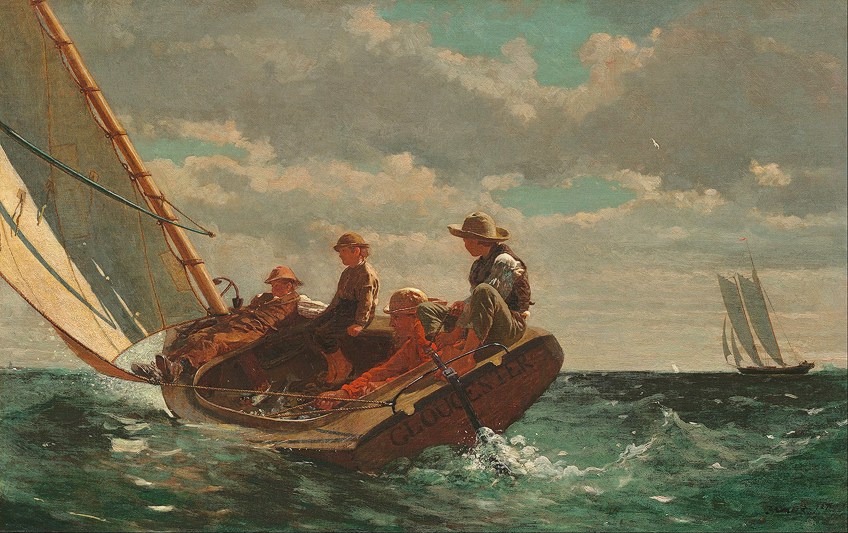
Fishing Boats on the Beach at Saintes-Maries (1888) by Vincent van Gogh
This sailboat painting is a reworking of the artist’s drawing and is one of his most impressive attempts at establishing balance and harmony. The fishing boats stand in sharp contrast to his condition, serving as a source of optimism for the painter as he neared the end of his life. Vincent van Gogh applied his colors with a palette knife, and the contrasting blue and white portions of the water are filled with greens and blues to form the waves. He also produced the boats with a reed pen and added the white and blue colors with big scribbles.
As a result, the picture has a flowing movement and a blend of Impressionist and Realism elements.

Warship and sailboat paintings have always been popular subjects. This is likely due to the fact that ships have played such an important role in the development of civilization. Thanks to artists who are fascinated with these incredible vessels, we have many famous ship paintings to admire nowadays.
Take a look at our ship paintings webstory here!
Frequently Asked Questions
Why are paintings of ships at sea such a popular topic.
Ships have played an essential role in the past for humans, helping us explore new lands and peoples. Perhaps it is this sense of adventure and free spirit that artists personally resonate with. Or perhaps creating nautical paintings provides them with the chance to portray both nature and man-man creations.
What Do Famous Ship Paintings Portray?
Some artists depict intense battle scenes from human history. Others prefer to create sailboat paintings that have a more subdued and peaceful atmosphere. Other times, the artwork can have a biblical or mythological tale attached to it. Paintings of ships at sea are not only numerous but diverse in their themes and styles.

Isabella studied at the University of Cape Town in South Africa and graduated with a Bachelor of Arts majoring in English Literature & Language and Psychology. Throughout her undergraduate years, she took Art History as an additional subject and absolutely loved it. Building on from her art history knowledge that began in high school, art has always been a particular area of fascination for her. From learning about artworks previously unknown to her, or sharpening her existing understanding of specific works, the ability to continue learning within this interesting sphere excites her greatly.
Her focal points of interest in art history encompass profiling specific artists and art movements, as it is these areas where she is able to really dig deep into the rich narrative of the art world. Additionally, she particularly enjoys exploring the different artistic styles of the 20 th century, as well as the important impact that female artists have had on the development of art history.
Learn more about Isabella Meyer and the Art in Context Team .
Cite this Article
Isabella, Meyer, “Famous Ship Paintings – Best Nautical Paintings of Ships at Sea.” Art in Context. November 23, 2022. URL: https://artincontext.org/famous-ship-paintings/
Meyer, I. (2022, 23 November). Famous Ship Paintings – Best Nautical Paintings of Ships at Sea. Art in Context. https://artincontext.org/famous-ship-paintings/
Meyer, Isabella. “Famous Ship Paintings – Best Nautical Paintings of Ships at Sea.” Art in Context , November 23, 2022. https://artincontext.org/famous-ship-paintings/ .
Similar Posts

“Observatory Time: The Lovers” by Man Ray – An Analysis

Gustav Klimt Artworks – The Best Gustav Klimt Portraits and Paintings

Famous Angel Paintings – Classic Famous Paintings of Angels

Pablo Picasso Blue Period – Discover Picasso’s Blue Period Works

Kehinde Wiley Paintings – The African American Portrait Artist

Famous Sad Paintings – The World’s Most Emotional Artworks
Leave a reply cancel reply.
Your email address will not be published. Required fields are marked *
Save my name, email, and website in this browser for the next time I comment.
The Most Famous Artists and Artworks
Discover the most famous artists, paintings, sculptors…in all of history!

MOST FAMOUS ARTISTS AND ARTWORKS
Discover the most famous artists, paintings, sculptors!


Claude Monet’s six most splendid paintings of sailboats
by Barista Uno | Nov 15, 2021 | Maritime Art, Culture and History

Sailboats held as much as fascination for French Impressionist master Claude Monet as water lilies and haystacks . He made several paintings of them. The following, in my opinion, are his most splendid works on the subject. They spotlight not only the beauty and elegance of sailboats. More importantly, they show Monet’s inimitable handling of colour, light and atmosphere.
“For me, a landscape does not exist in its own right, since its appearance changes at every moment; but the surrounding atmosphere brings it to life – the air and the light, which vary continuously. For me, it is only the surrounding atmosphere which gives subjects their true value.”
— claude monet, 1891 (as quoted by tate uk ).

Sailboat in Petit-Gennevilliers, 1874 Claude Monet (1840–1926) Courtesy of Wikimedia Commons
A sky exploding with wonderful colours and reflections on the serene waters of the Seine combine to transform an ordinary sailboat into something majestic.

Sailboats, regatta at Argenteuil, 1874 Claude Monet (1840–1926) Courtesy of Wikimedia Commons
Monet used the same pale palette for the sky, the sailboats and the river, adding tints of red for the houses to break the uniformity. Sky and water are dappled, and the boats are appear bunched together as they move gracefully along the river. All this gives the painting a peculiar kind of vitality and charm.

Le Havre, Fishing Boats Leaving the Port, 1874 Claude Monet (1840–1926) Courtesy of Wikimedia Commons
It’s a wet morning, but a crowd has gathered on the waterfront to watch the fishing boats sail out of the harbour to the open sea. The small figures in the foreground make the boats and their proud sails seem like multistoried buildings. This is captivating art with a narrative element.

Fishing Boats at Sea, 1868 Claude Monet (1840–1926) Courtesy of Wikiart: Visual Art Encyclopedia
Monet turned an ordinary day in the life of fishermen into a theatrical scene. The boat in the foreground is like an actor making his stage entrance as the curtain of day is raised. The two boats are rendered in dark brown to provide a contrast to the streaks of white light in the sky.

The Cliffs at Étretat, 1886 Claude Monet (1840–1926) Courtesy of Wikiart: Visual Art Encyclopedia
This painting — one of many done by Monet of the Étretat cliffs — is bursting with energy. Small patches of green, yellow and brownish orange are skillfully blended to create the impression of a dynamic but not choppy sea. The brightly coloured sky and the flotilla of small fishing boats accentuate the massive, towering cliffs.

Seascape, Storm, 1866 Claude Monet (1840–1926) Courtesy of The Clark, Massachusetts, USA
Seascape, Storm is an early work by Monet that is markedly different in style and technique from his later Impressionist paintings. In lieu of small, swift brushtrokes, the colours are applied solidly with some areas worked with a palette knife. The fishing boat is set against an ominous grey sky, and the sea is mostly a dark green. Just below the horizon line is a long strip of bright green, Monet suggesting perhaps that the storm will blow over, that there is hope.
You may also like
Art vs. reality: claude monet’s paintings of étretat.

Did you like this article? Buy me a coffee
Let us know what you think of this article.
If you like this site buy me a coffee

Recent Posts
- Sunset over water: The power of black & white
- ‘I am a feminist’: A male writer speaks up
- Sunsets at sea: Colour versus black & white photography
- Which is correct: ‘in a boat’ or ‘on a boat’?
- Women in boats: A celebration of beauty
Don't Miss the Brew!
Sign up to be notified of updates to Marine Cafe Blog
You have Successfully Subscribed!
Pin it on pinterest.
All About Sailing in Painting
Magda Michalska 26 August 2022 min Read
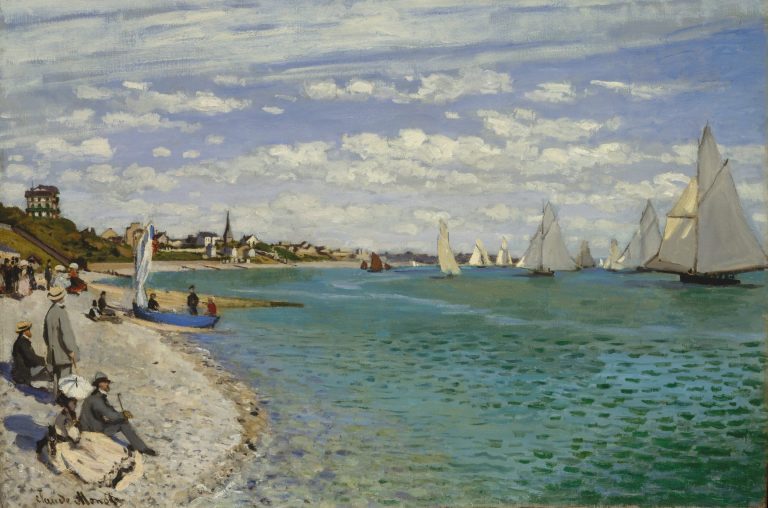
Claude Monet, Regatta at Sainte-Adresse , The Metropolitan Museum, New York, NY, USA. Detail.
Recommended

Masterpiece Story: Sailboats by Lyonel Feninger
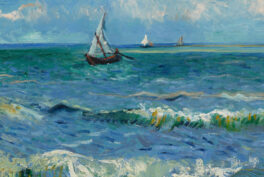
European Art
Masterpiece Story: Seascape Near Les Saintes-Maries-de-la-Mer by Van Gogh

Art Travels
Seven Luminist Seascapes to Make You Want a Beach Vacation
I’ve sailed only once or twice in my whole life but I can still remember the empowering feeling of liberation that I felt when on the water. Sailing and sailboats have been a common topic taken up by many artists across decades and countries in painting. Let’s sail with them, bon voyage!
1. On Board with Friedrich

Has this scene filled with light surprised you? Well, in the end, Friedrich is associated more with grey tones and lonely travelers…
2. Renoir’s Sailboats
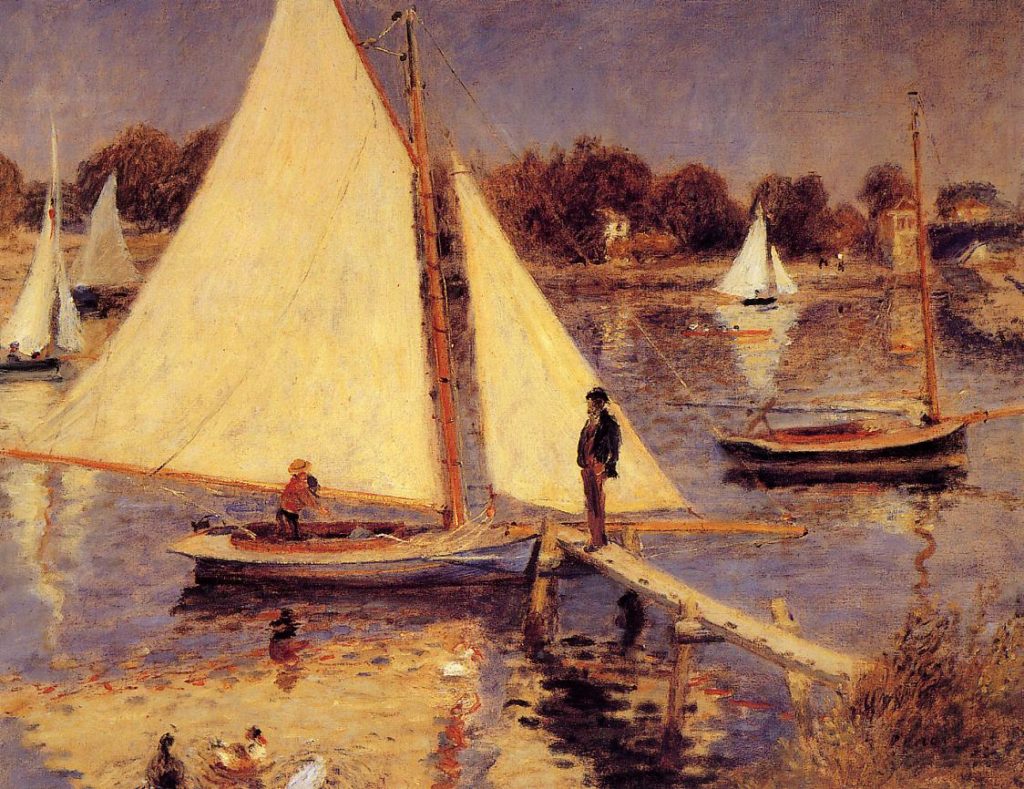
Some people say that Renoir didn’t know how to paint . Well, I think that works like this one defy this argument, don’t you think?
3. Sea Trip with Courbet
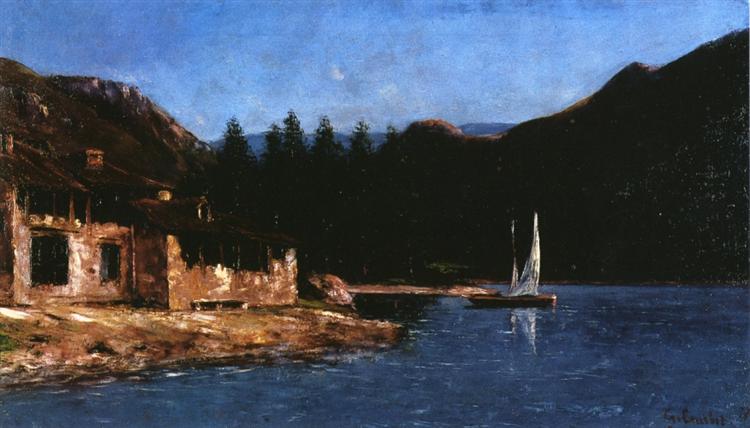
Gustave Courbet might be well-known for his provocative works like the Origin of the world , but in fact, he was a great landscape painter who loved depicting water and rocks.
4. Twatchman’s Sunny Vibes
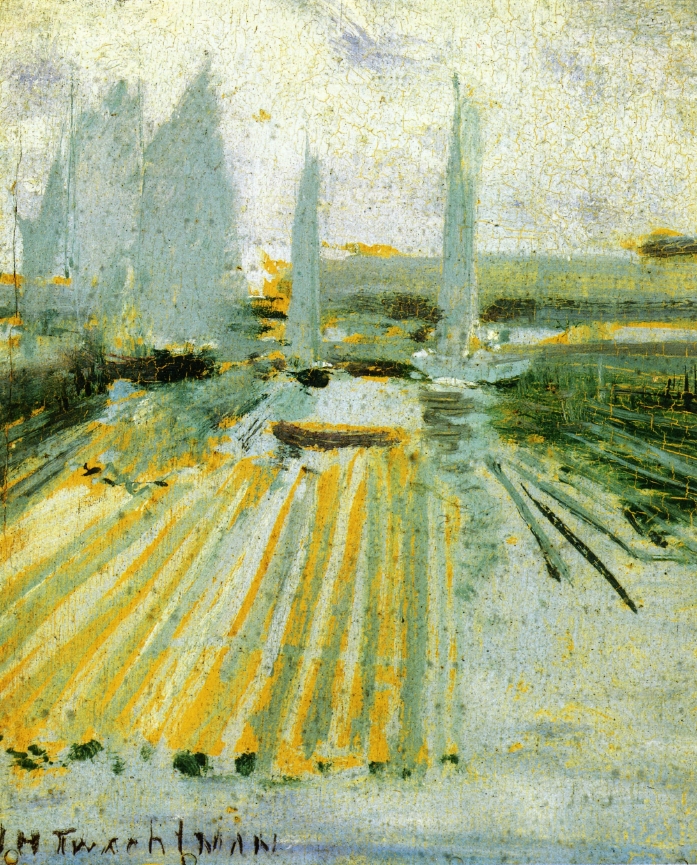
When days get too sunny article features another work by J.H. Twatchman . Have a read!
5. Kandinsky’s Folk Sail

This woodblock print by Wassily Kandinsky is inspired by folk art from his native Russian Empire.
6. Sail like a Fauve with Vlaminck
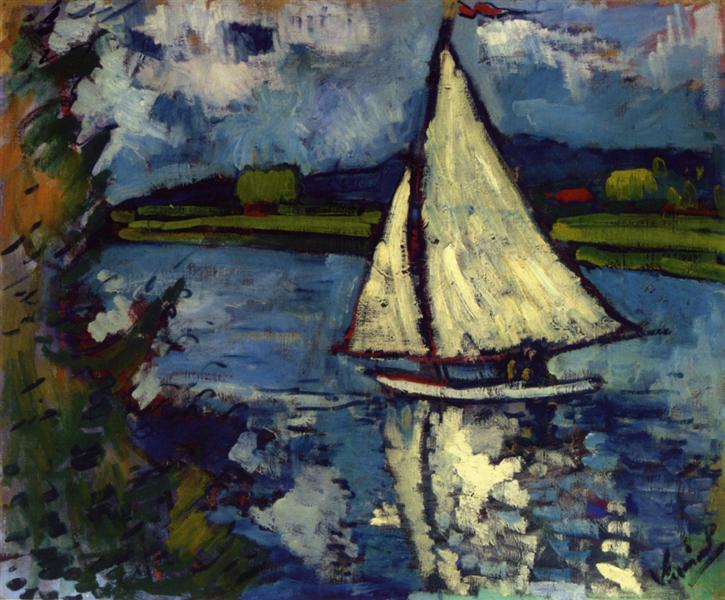
Maurice de Vlaminck was a member of the Fauves together with Henri Matisse and André Derain.
7. Provocative Trips with Kokoschka

This woodblock print was part of the printed book for children that Oskar Kokoschka made. Yet, it turned out to be very provocative… Why? Read here .
8. Dufy’s Coast City
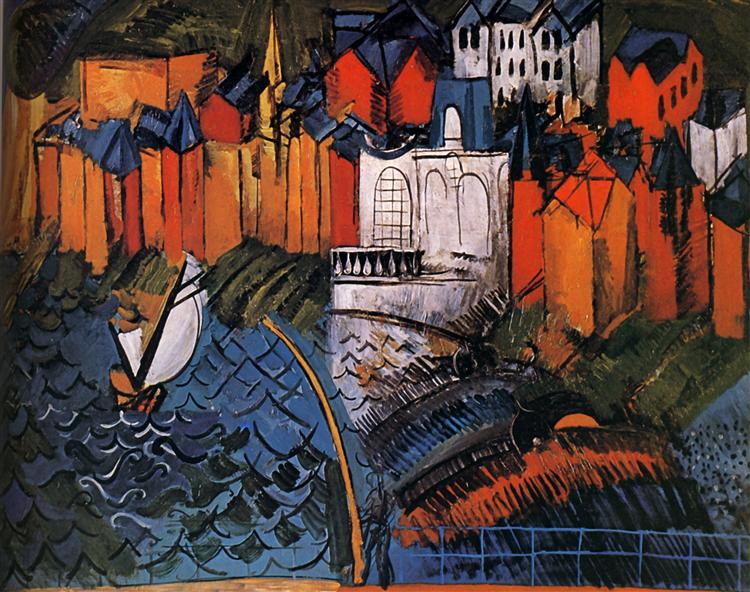
Raoul Dufy was yet another Fauvist and I feel there is going to be an article about him one day here!
9. Abstract Sails by Klee

Paul Klee liked studying the shapes of well-known objects and natural phenomena.
Lichtenstein’s Sea Impasto

Lichtenstein and landscapes? Might seem surprising but he was actually a way more comprehensive artist than we think…
- Caspar David Friedrich
- Claude Monet
- Gustave Courbet
- John Henry Twachtman
- Maurice de Vlaminck
- Oskar Kokoschka
- Pierre-Auguste Renoir
- Roy Lichtenstein
- Wassily Kandinsky
Get your daily dose of art
Click and follow us on Google News to stay updated all the time
We love art history and writing about it. Your support helps us to sustain DailyArt Magazine and keep it running.
DailyArt Magazine needs your support. Every contribution, however big or small, is very valuable for our future. Thanks to it, we will be able to sustain and grow the Magazine. Thank you for your help!
Magda Michalska
Magda, art historian and Italianist, she writes about art because she cannot make it herself. She loves committed and political artists like Ai Weiwei or the Futurists; like Joseph Beuys she believes that art can change us and we can change the world.

Jesus Christ the Gardener: Noli Me Tangere in Art
How did Jesus inadvertently become a gardener in art? Well, it all started with a simple mistake. But maybe there’s a profound symbolic meaning...
Ela Bobek 1 April 2024

Maiden or Boy? Androgyny and Misogyny in Symbolist Art
As the 19th century barreled towards the 20th, a profound reevaluation of established gender roles manifested in the confluence of burgeoning...
Martha Teverson 8 February 2024

Divine Inspiration: Angels in Art
Angels have been a source of artistic inspiration throughout history. Whether adorned with wings and halos or not, the varied appearances of angels...
Jenna Burns 26 December 2023

One Final Masterpiece: 7 Last Paintings from Great Masters
Hippocrates said that life is short, and art is long. Every great artist left behind iconic works of art that have lived long after their death. Some...
Sam Malone 11 December 2023
Never miss DailyArt Magazine's stories. Sign up and get your dose of art history delivered straight to your inbox!
- The Collection
- The American Wing Ancient Near Eastern Art Arms and Armor The Michael C. Rockefeller Wing Asian Art The Cloisters The Costume Institute Drawings and Prints Egyptian Art European Paintings European Sculpture and Decorative Arts Greek and Roman Art Islamic Art Robert Lehman Collection The Libraries Medieval Art Musical Instruments Photographs Antonio Ratti Textile Center Modern and Contemporary Art
Crop your artwork:
Scan your QR code:
Gratefully built with ACNLPatternTool
Edouard Manet French
On view at The Met Fifth Avenue in Gallery 818
Manet summered at Gennevilliers in 1874, often spending time with Monet and Renoir across the Seine at Argenteuil, where Boating was painted. Beyond adopting the lighter touch and palette of his younger Impressionist colleagues, Manet exploits the broad planes of color and strong diagonals of Japanese prints to give inimitable form to this scene of outdoor leisure. Rodolphe Leenhoff, the artist’s brother-in-law, is thought to have posed for the sailor but the identity of the woman is uncertain. Shown in the Salon of 1879, Boating was deemed "the last word in painting" by Mary Cassatt, who recommended the acquisition to the New York collectors Louisine and H.O. Havemeyer.
to experts illuminate this artwork's story
#6250. Boating
Your browser doesn't support HTML5 audio. Here is a link to download the audio instead.
Custom framed to suit your space
Due to rights restrictions, this image cannot be enlarged, viewed at full screen, or downloaded.
Open Access
As part of the Met's Open Access policy , you can freely copy, modify and distribute this image, even for commercial purposes.
Public domain data for this object can also be accessed using the Met's Open Access API .
- https://www.metmuseum.org/art/collection/search/436947 https://www.metmuseum.org/art/collection/search/436947 Link copied to clipboard
- Animal Crossing
- Download image
- Enlarge image
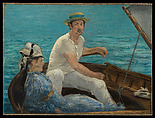
This artwork is meant to be viewed from right to left. Scroll left to view more.
Fig. 1. Mary Cassatt, "The Boating Party," 1893/1894, oil on canvas, 35 7/16 x 46 3/16 in. (90 x 117.3 cm) (National Gallery of Art, Washington)
Fig. 2. Stop, “La Femme Edredon, par M. Manet, chef de l’entreprise des bateaux coupés” (The Eiderdown-Woman, by Mr. Manet, leader of the business of cut boats), "Le Journal amusant," June 14, 1879, no. 204 (Bibliothèque nationale, Paris) (Repro’d. in Darragon 1991, p. 404, no.339.)
Fig. 3. Edouard Manet, "Boats at Sea, Sunset," ca. 1868, oil on canvas, 43 x 94 cm (Musée d’art moderne André Malraux, Le Havre)
Fig. 4. Edouard Manet, "Argenteuil," 1874, oil on canvas, 149 x 115 cm (Musée des Beaux-Arts, Tournai)
Fig. 5. Edouard Manet, "The Swallows," 1873, oil on canvas, 65 x 81 cm (Foundation E. G. Bührle Collection, Zürich)
Fig. 6. Edouard Manet, "On the Beach," 1873, oil on canvas, 95.9 x 73 cm (Musée d’Orsay, Paris)
Artwork Details
Use your arrow keys to navigate the tabs below, and your tab key to choose an item
Title: Boating
Artist: Edouard Manet (French, Paris 1832–1883 Paris)
Medium: Oil on canvas
Dimensions: 38 1/4 x 51 1/4 in. (97.2 x 130.2 cm)
Classification: Paintings
Credit Line: H. O. Havemeyer Collection, Bequest of Mrs. H. O. Havemeyer, 1929
Accession Number: 29.100.115
Learn more about this artwork
Timeline of art history, couples in art, impressionism: art and modernity, édouard manet (1832-1883), france, 1800-1900 a.d., related artworks.
- All Related Artworks
- In the same gallery
- By Edouard Manet
- European Paintings
- From Europe
- From France
- From A.D. 1800–1900
Cat and Flowers
The Smoker (Le Fumeur)
Boy with Soap Bubbles
The Water Drinker
Resources for research.
The Met's Libraries and Research Centers provide unparalleled resources for research and welcome an international community of students and scholars.
The Met Collection API is where all makers, creators, researchers, and dreamers can connect to the most up-to-date data and public domain images for The Met collection. Open Access data and public domain images are available for unrestricted commercial and noncommercial use without permission or fee.
We continue to research and examine historical and cultural context for objects in The Met collection. If you have comments or questions about this object record, please complete and submit this form . The Museum looks forward to receiving your comments.
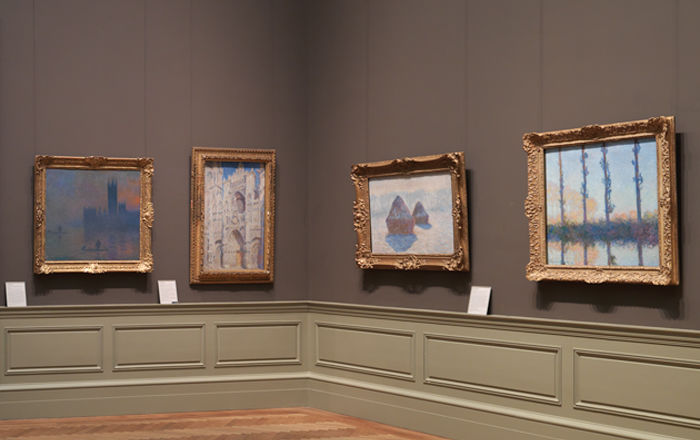
European Paintings at The Met
Orientation
Artist country.
United States
United Kingdom
Netherlands
Bosnia And Herzegovina
Czech Republic
South Korea
Switzerland
New Zealand
Featured Artist
Saatchi Art Catalog
Inside The Studio
Rising Stars
One To Watch
The Other Art Fair

Les voiliers de la Liberté... | "BOATS OF FREEDOM..."
Paintings , 98.4 W x 39.4 H x 2 D in
Olivier Messas
Blue Bay | Galley Bay
Paintings , 15.7 W x 11.8 H x 0.8 D in
Yuliya Martynova
4612 Lagoa dos Patos -sailing boats
Paintings , 9.4 W x 12.2 H x 0 D in
Andres Vivo
Prints from $40
4542 Windy - seascape
Paintings , 11.8 W x 8.3 H x 0 D in
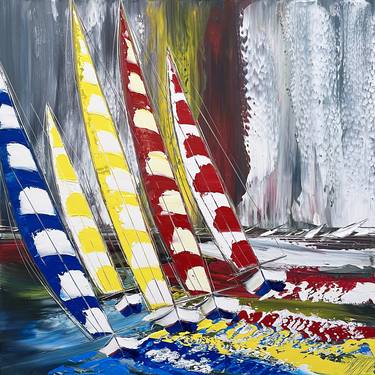
Couleurs en mer... "COLORS AT SEA" (SAILING SPIRIT 2022)
Paintings , 39.4 W x 39.4 H x 0.8 D in
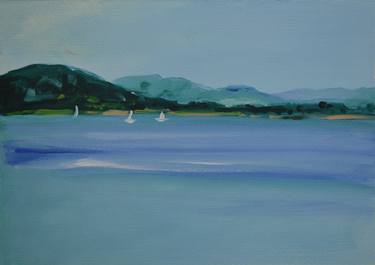
Żywiec Lake 6
Paintings , 12.8 W x 8.9 H x 0 D in
Marta Zamarska
Prints from $64
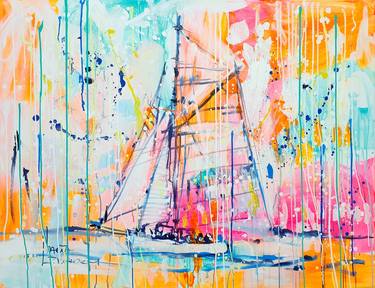
White Melody
Paintings , 51.2 W x 39.4 H x 0.8 D in
Marta Zawadzka
Jour de régate... | "RACING DAY..." (2019)
Paintings , 47.2 W x 15.7 H x 0.8 D in
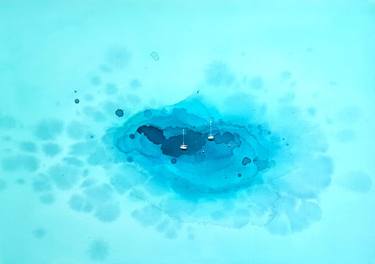
Blue Bay | Tiger Bay Blue Hole
Paintings , 27.6 W x 19.7 H x 0.8 D in

Voiliers à l’horizon... IV « SAILBOATS AT THE HORIZON... IV »
Paintings , 59.1 W x 19.7 H x 0.8 D in

Sail Boat Marina L 1 / Oil
Paintings , 61 W x 33.5 H x 1.5 D in
Peter Nottrott
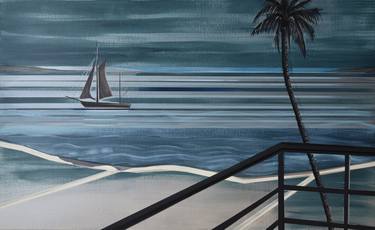
Sailing the Caribbean
Paintings , 51.2 W x 31.5 H x 1 D in
Cécile van Hanja
Prints from $61
the pink sky (symphony series)
Paintings , 39.4 W x 9.8 H x 1.6 D in
Martina Niederhauser-Landtwing
3826 Blue top - sailing boats
Paintings , 11.4 W x 9.1 H x 0 D in
dream higher than the sky
Paintings , 47.2 W x 13.8 H x 1.6 D in

Régate... "REGATTA"
Paintings , 78.7 W x 23.6 H x 0.8 D in
Żywiec Lake 8
Paintings , 10.2 W x 7.5 H x 0 D in
Prints from $49

Jour de régate… “DAY OF REGATTA”
Paintings , 39.4 W x 19.7 H x 0.8 D in

* REGATTA *
Paintings , 36 W x 24 H x 1.5 D in
Rudy SchneeWeiss
Prints from $56
4711 Escorado sailing boat
Paintings , 11 W x 7.9 H x 0 D in
4346 Reflejos azules -San Diego
Paintings , 11 W x 9.1 H x 0 D in

Paintings , 20 W x 20 H x 1.6 D in
Sophia Oshodin
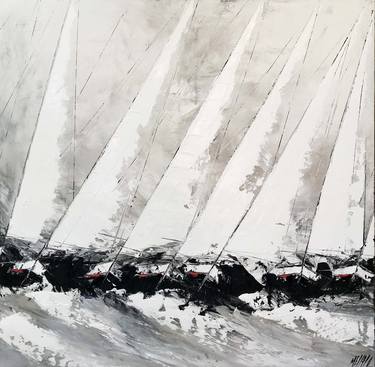
Les voiles de Saint-Tropez
Paintings , 55.1 W x 55.1 H x 0.8 D in
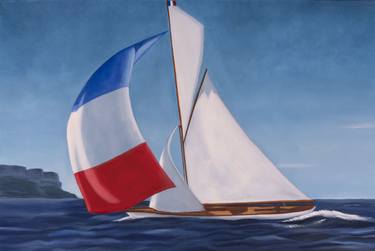
Paintings , 36 W x 25 H x 0.8 D in
Randolph South
4185 Maritime community - ships
Paintings , 11.4 W x 9.4 H x 0 D in
Prints from $95
Żywiec Lake 7
Paintings , 17.7 W x 12.8 H x 0 D in
Blue Bay | Larna
Paintings , 16.1 W x 12.2 H x 0.8 D in
4426 Dusk at the Nile river - sunset
Landscape with a Sail Boat
Paintings , 3.8 W x 5.1 H x 0.1 D in
Vita Schagen
Seascape with Sailboats 34
Paintings , 16.5 W x 15 H x 0.8 D in
Garry Arzumanyan
Prints from $65
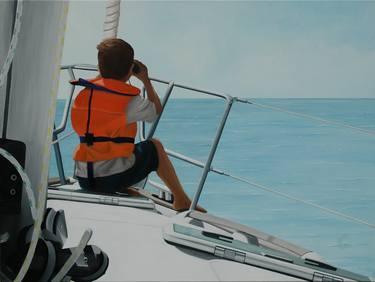
Skipper to be
Paintings , 47.2 W x 35.4 H x 0.6 D in
Peter Seminck
4663 Red Buildings - sunset
Paintings , 9.8 W x 7.9 H x 0 D in
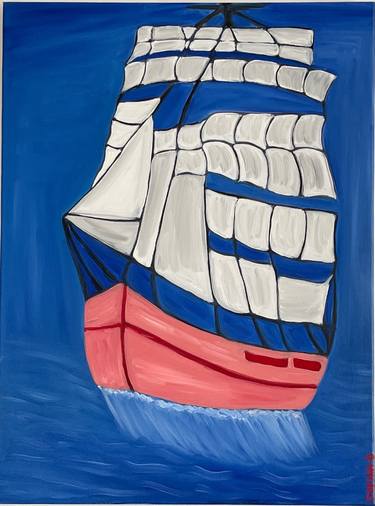
Sailing With The League
Paintings , 18 W x 24 H x 1.6 D in
4415 Shadows of the city scape - sailing boats
Paintings , 11 W x 8.7 H x 0 D in
3827 Fond of... -sailing boats
3835 Madrugada violacea
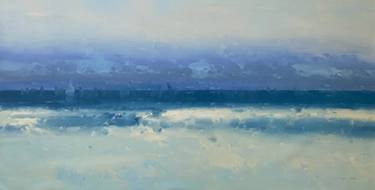
Cold Breeze
Paintings , 68 W x 35 H x 1 D in
Vahe Yeremyan
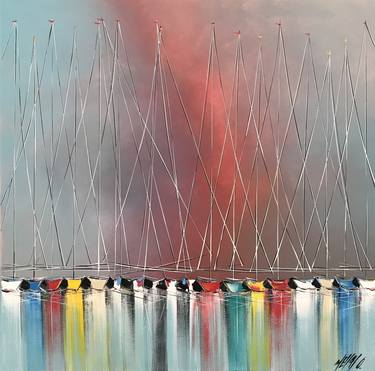
Jeux de lumière et de reflet... | "LIGHT AND REFLECTION..."
Paintings , 31.5 W x 31.5 H x 0.8 D in
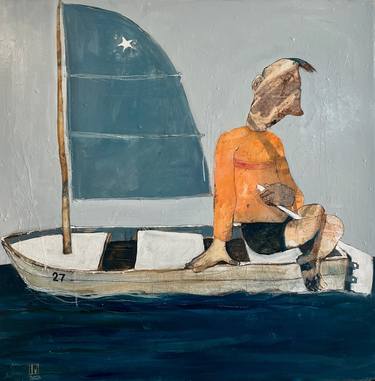
Future Team New Zealand
Paintings , 41.3 W x 41.3 H x 2.8 D in
ILYA VOLYKHINE
Prints from $100
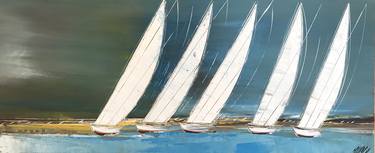
Au rythme des voiles blanches | “THE RHYTHM OF THE WHITE SAILS”
Paintings , 47.2 W x 19.7 H x 0.8 D in
Żywiec Lake 9
Contre vent et marée... | « AGAINST WIND AND LOW TIDE... »
4509 White cruiser - sailing boats
Paintings , 12 W x 9.1 H x 0 D in
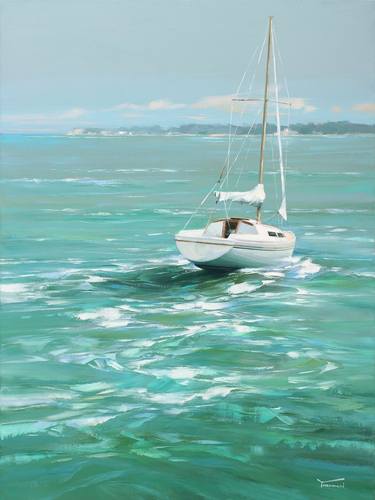
Paintings , 30 W x 40 H x 0.1 D in
Yooshin Kim
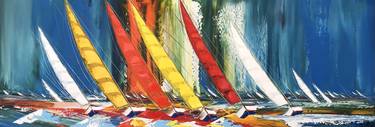
Évasion en mer... | « Escape at sea... » (SAILING SPIRIT 2021)
Paintings , 78.7 W x 27.6 H x 2 D in
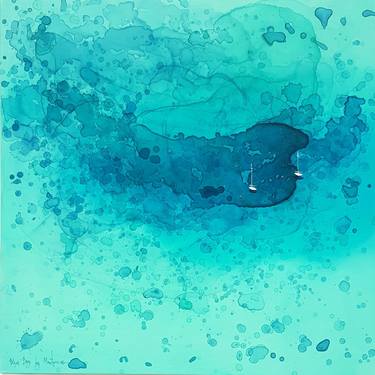
Blue Bay | Makena
Paintings , 23.6 W x 23.6 H x 0.8 D in
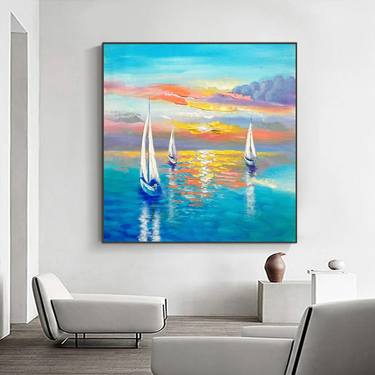
Sunrise Seascape painting with sail boats, Sailboat painting
Paintings , 40 W x 40 H x 0.5 D in
Soft Seascape.
Paintings , 15.7 W x 15.7 H x 0.6 D in
Viktoriya Filipchenko
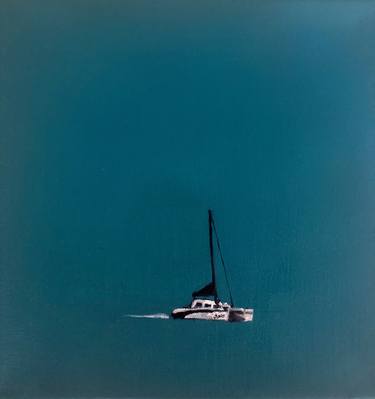
The wind and the waves
Paintings , 10 W x 10 H x 0.5 D in
dimeji onafuwa
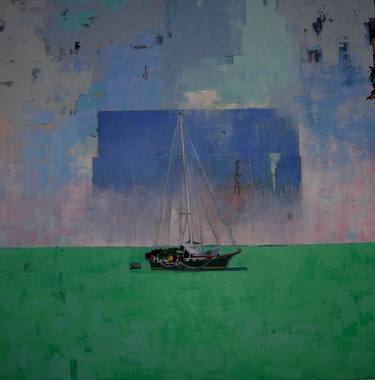
Paintings , 36 W x 36 H x 4 D in
Christina Penrose
1 - 50 of 477 paintings

10 Most Famous Ship Paintings
One of the most iconic painting niches in the world is that of ship paintings. For centuries, the world’s seas were dominated by various nations who sent trading vessels and warships out into the blue horizon.
Over many years, these ships became the lifeblood of the economies of certain countries like Portugal and Great Britain, their crews bringing and delivering precious cargo of all kinds.
Ships of all shapes and sizes have sailed the seas for more than a thousand years. The juxtaposition of a sophisticated man-made ship with the unpredictable and dangerous nature of the ocean and Mother Nature itself is part of what draws the admiration of so many art lovers and enthusiasts, especially along coastal regions.
Many artists throughout history have dabbled in producing works that featured ships and their legendary voyages on the high seas with some focusing solely on the subject of maritime travel. Here are some of the most famous ship paintings ever created.
Famous Ship Paintings
1. the fighting temeraire tugged to her last berth to be broken up – j.m.w turner.
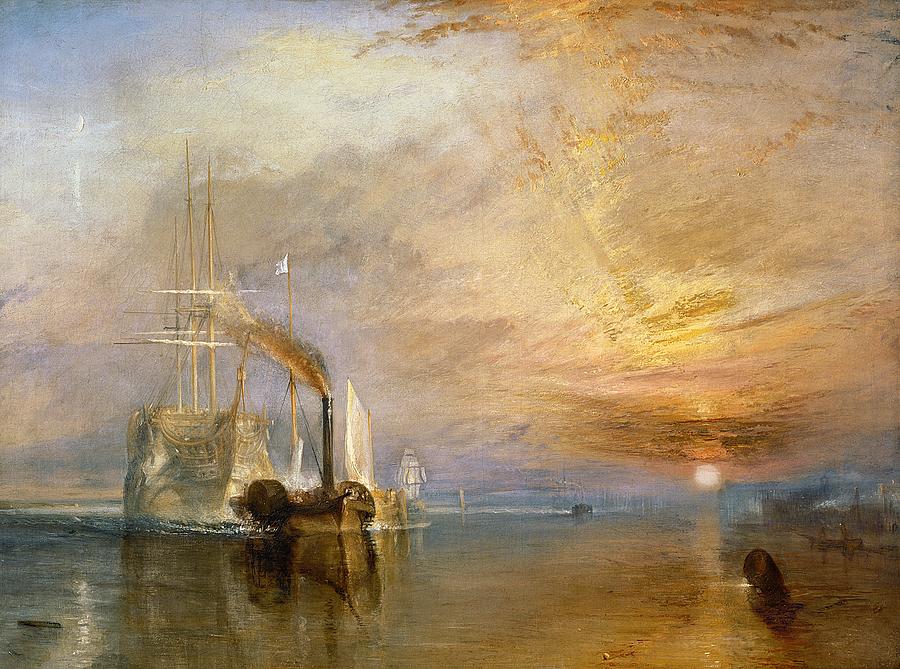
One of J.M.W. Turner’s most famous paintings involves a well-known warship that was the star of at least one iconic battle for the British Royal Navy in the 18th century. His work is titled The Fighting Temeraire Tugged to her last Berth to be Broken Up, a lackluster, but fitting description of the fate of this once feared vessel that was pivotal to the nation’s fleet of warships.
The painting was done in 1839 and depicts the final moments of the Temeraire as it is slowly tugged out to sea to be dashed and parted out.
The painting is from the Romanticism era and is an interesting contrast between the changing technologies that were happening in maritime shipbuilding and travel during the early 1800’s.
The majestic and once-famous warship, who played a major role at the Battle of Trafalgar, is now being dragged away from port by a lowly, steam-powered tugboat.
It is a sad reminder that a certain sense of elegance and grandeur is often lost in what many deem to be a progressive advance of technology.
2. A First Rate Man-of-War Driven Onto a Reef of Rocks, Floundering in a Gale – George Philip Reinagle
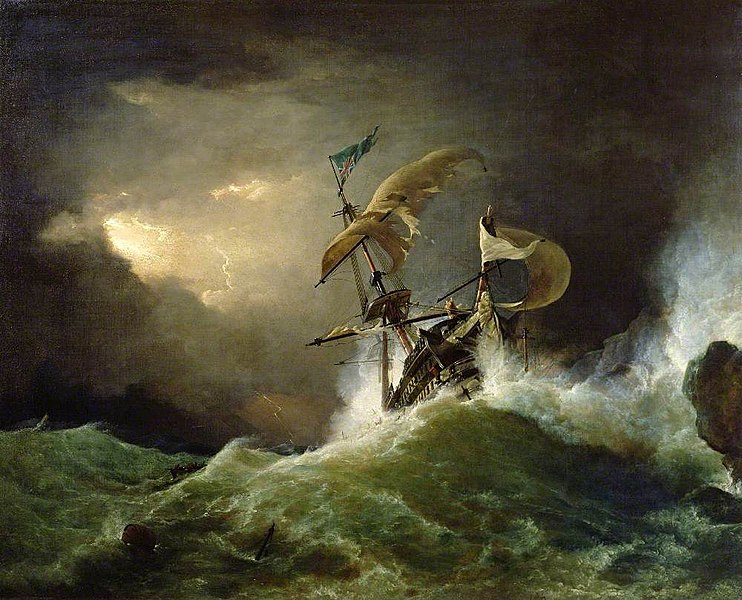
The early 1800’s is likely the height of the era of famous ship paintings. One of the most well-known maritime painters was George Philip Reinagle, who was well-known for his ability to capture the essence of the sea’s sometimes tumultuous character that had destroyed so many powerful, strong vessels throughout history.
His 1836 work titled A First Rate Man-of-War Driven Onto a Reef of Rocks, Floundering in a Gale is aptly-named as it features just that—a ship that has been caught in the clutches of the raging sea.
One of the most intriguing aspects of maritime travel was the possibility that sailors could meet a terrifying demise if they were caught in a blustering storm, otherwise known as a gale.
This painting is iconic for Reinagle’s ability to depict the giant, crushing force of the waves along with the sea spray that has been kicked up by the high winds. This work is a grim reminder that not all seafaring travel and adventure ends safely.
Many ocean paintings containing ships will invariably make the ship the main focus, but in Reinagle’s piece it is the power of the ocean waves that dominate.
3. Battle of Trafalgar 1805 – Louis Phillipe Crepin
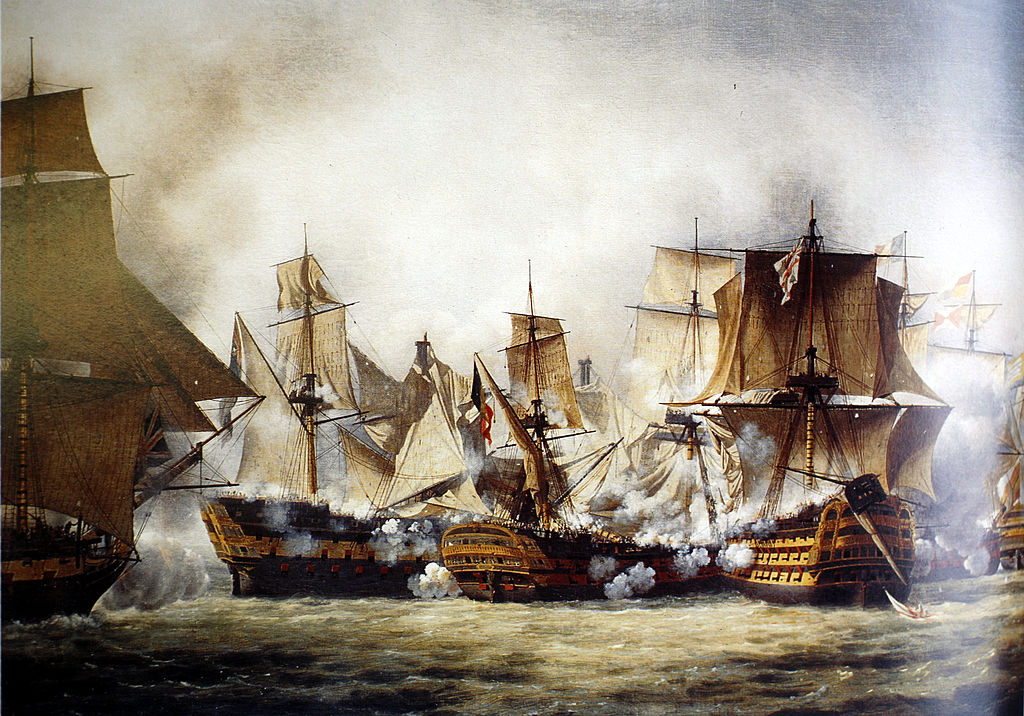
Some of the most famous ship paintings involve intense, deadly battles at sea between powerful naval fleets. Such is the case with Louis Phillipe Crepin’s 1805 work titled Battle of Trafalgar.
This painting depicts one of the most famous naval battles in history that took place in the year noted.
The Battle of Trafalgar featured the mighty British Royal Navy as they were pitted against two other worthy opponents—the Spanish and French naval forces—who had joined forces to try and topple the powerful force that had dominated the waters surrounding Europe and much of the world during this time.
Crepin’s painting portrays, with great accuracy, the close-quarters combat that so often occurred in naval battles.
4. Snow Storm – Steam-Boat off a Harbour’s Mouth – J.M.W Turner

As noted above, J.M.W. Turner was among the most famous artists who focused on the life and voyages of sailors and their ships.
Many times, these voyages were undertaken during powerful, unpredictable storms that all-too-often led to the ships capsizing and the entire crews being lost.
Turner’s 1842 work titled Snow Storm – Steam-Boat off a Harbour’s Mouth is one such painting that depicts the sea’s ability to make any vessel, large or small, feel the power of its might from time to time.
Also Read: Famous Lighthouse Paintings
The painting features the steam boat ship caught in a frigid snow storm , the wind sweeping and whipping in every direction as the ship struggles to stay on course and avoid succumbing to the massive waves.
According to many art historians, Turner went to great lengths to accompany various ships’ crews on their journeys so that he could paint his works as accurately as possible.
5. Becalmed off Halfway Rock – Fitz Hugh Lane
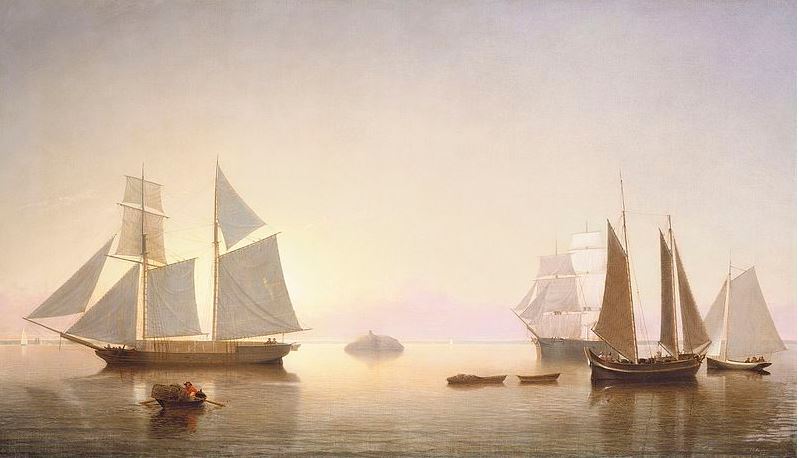
So many of the most famous ship paintings ever created feature vessels that are either engaged in raging battles, or caught in powerful gales on the open ocean. However, there are a few notable works that depict the calm, serene nature of the ocean or coastal areas.
Fitz Hugh Lane’s Becalmed off Halfway Rock is one such work that depicts a scene of beauty that few people outside the world of ships and sailing ever get to experience.
This 1860 work depicts ships anchored down next to Halfway Rock, a famous sea marker that is situated approximately halfway between Boston and Cape Ann.
This marker was a popular stop for trading vessels and supply ships as they could join up with other ships and carry out various types of maritime business at a specific location.
Lane’s work features a number of ships anchored down with small row boats working their way from one to another, likely swapping various cargo and other items.
6. Dutch Men-O’-War and Other Shipping in a Calm – Willem van de Velde II
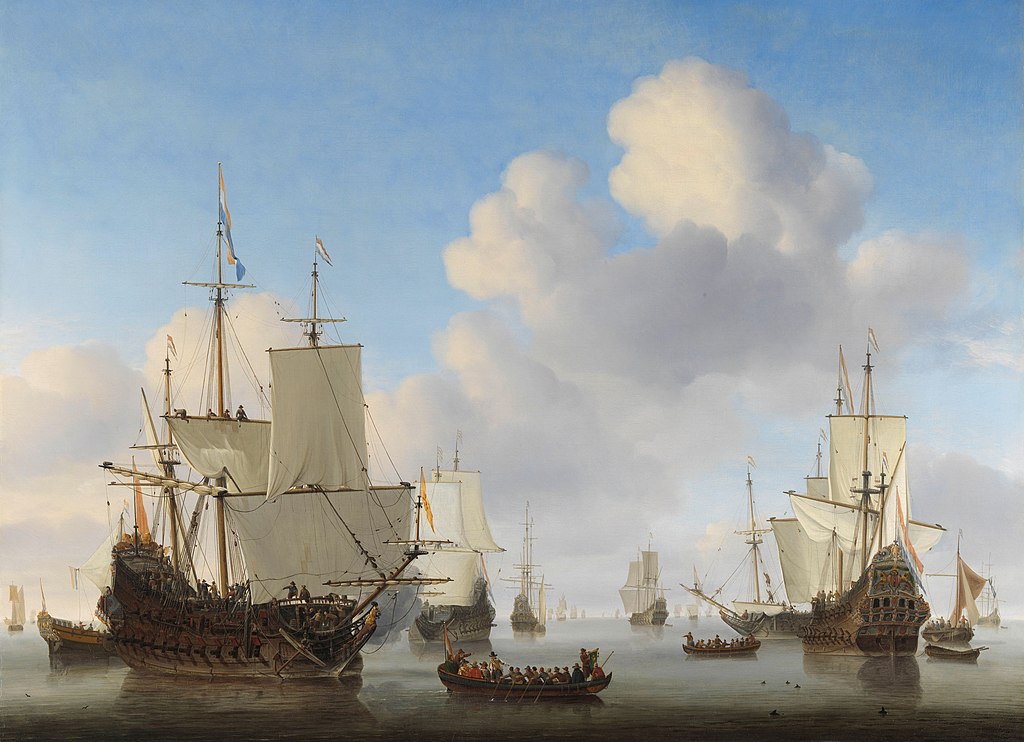
Willem van de Velde II was a painter who specialized in maritime art during his career in the late 17th century.
This was a time when sailing ships were the height of mankind’s technological achievements and the naval fleets of various nations were the most vital part of any military force.
Velde’s work titled Dutch Men-O’-War and Other Shipping in a Calm was created in 1665 and features the Dutch navy’s vast fleet of ships that include the deadly and feared Men-O’-War vessels.
These ships were known as floating fortresses who possessed the ability to mercilessly pummel opposing ships or coastal forts and cities with impressive precision.
7. The Home Fleet Saluting the State Barge – Jan van de Cappelle
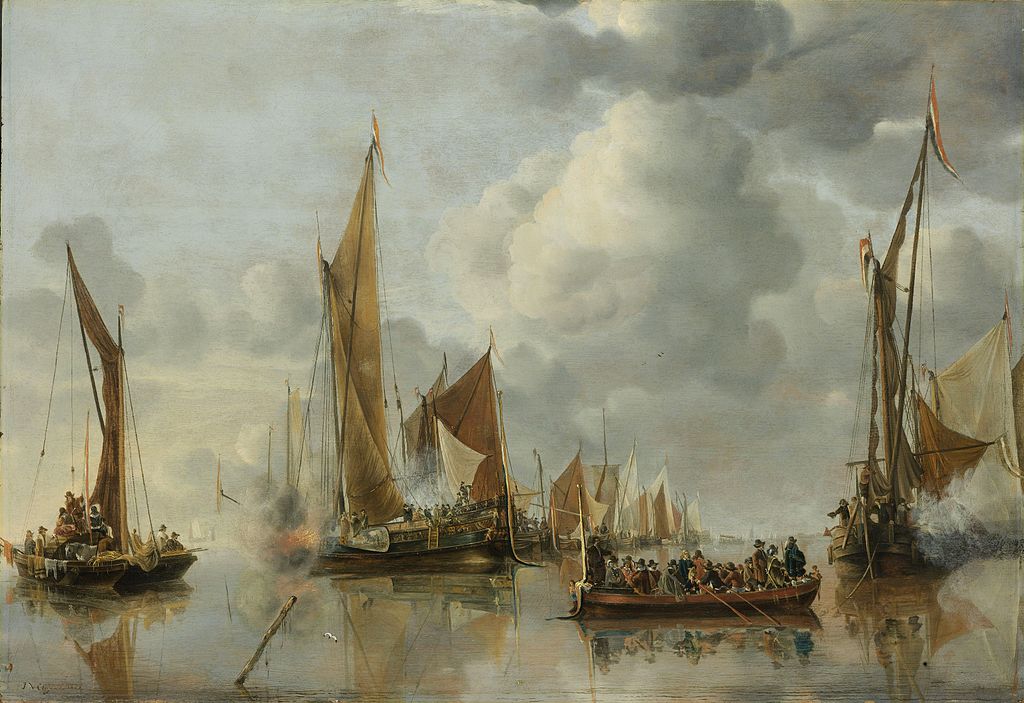
The mid-1600’s was a time in which maritime travel was responsible for reshaping the people and nations of the world as many pilgrims and travelers ventured to the New World across the Atlantic Ocean.
Jan van de Cappelle captured one instance of significance from this time period in his 1650 work titled The Home Fleet Saluting the State Barge.
The painting depicts a number of different ships gathered together in a port to salute a prominent vessel as it embarked on its voyage.
Cappelle’s work is one of the most well-known ship paintings in history as he masterfully depicts the water’s ability to mirror the happenings above its surface with stunning detail.
8. Argenteuil (Red Boats) – Claude Monet
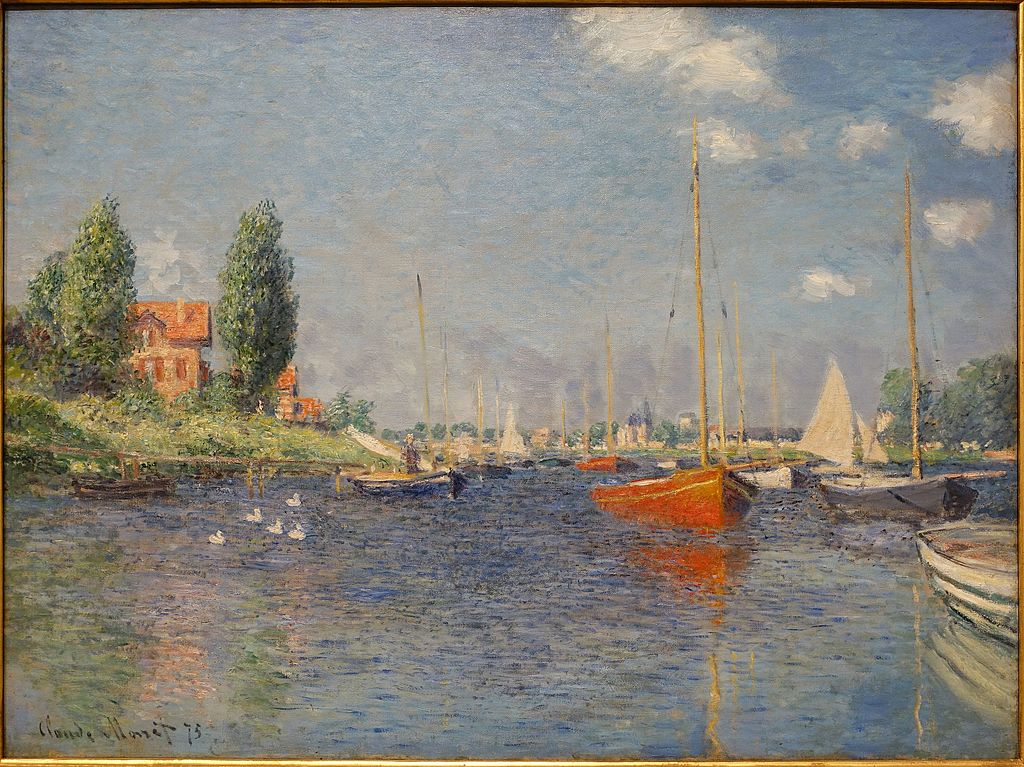
Claude Monet is celebrated as one of the most famous impressionist painters , but most of his work featured scenes from dry land instead of ships and maritime travel. However, his 1875 painting titled Argenteuil (Red Boats) is among one of the most recognized ship paintings ever created.
This work features Monet’s trademarked Impressionist painting style and depicts a calm scene that features contrasting colors that truly highlight the boats in the center of the canvas.
The smooth water appears almost like glass in its ability to reflect the boats and their towering masts.
Monet’s brushstrokes vary greatly when one focuses on the sky above the water and the boats, which are crafted with short, choppy strokes that are able to convey great detail.
9. Nelson’s Inshore Blockading Squadron at Cadiz – Thomas Buttersworth
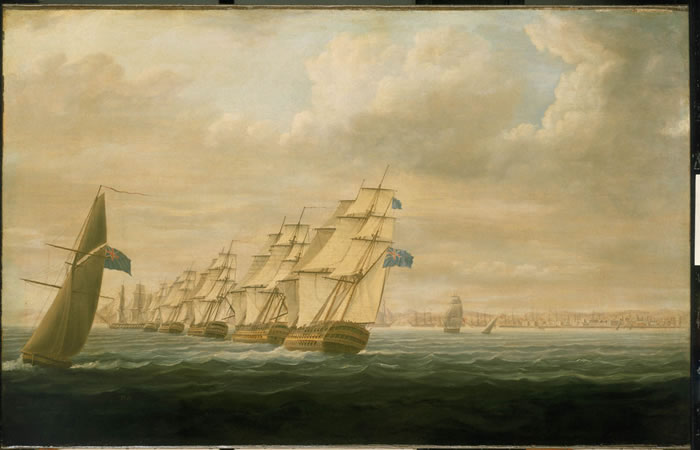
The British Royal Navy was at the peak of its seafaring prowess across much of Europe and the rest of the world during the latter half of the 18th century.
The nation’s powerful fleet engaged in many battles along the coast of Portugal during this time as the two countries were locked in a bout to control the waters around coastal Europe and other parts of the Atlantic.
Thomas Buttersworth painted a work in 1797 that is a testament to a great naval battle for the British forces off the coast of Lisbon. Following the famous Battle of St. Vincent, rear-admiral Nelson and 10 bargemen were engaging in a raid on Spanish gun-boats under the cover of darkness.
The Spanish commander realized his boats were under attack and launched an effort to defend them with 26 of his own men. Despite the British being heavily outnumbered, they managed to kill 18 Spanish sailors and capture the remaining few after a bloody sword fight ensued.
Buttersworth’s painting is a testament to that incident that was a historical victory for the British Navy.
10. Breezing Up (A Fair Wind) – Winslow Homer
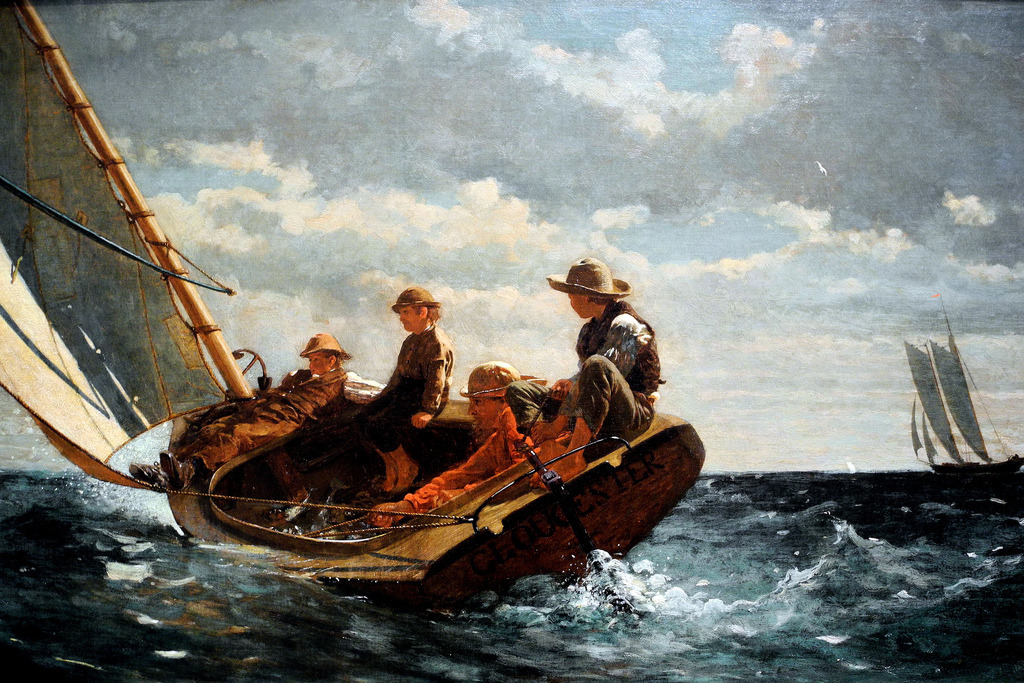
One of the most iconic American paintings of all time was done by Winslow Homer, who was another artist that was well-known for his maritime paintings.
His 1876 painting titled Breezing Up (A Fair Wind) features a highly-detailed scene of a small sailboat cruising along on the waves as the sun is at the backs of the men and boys aboard the boat.
In the painting, the boat’s sail is clearly filled with what many would consider to be a ‘fair wind’ as it leans heavily toward the water while the boat’s rudder is steered toward their destination.
The painting is meant to depict a common scene from the late 19th century America as sailing was one of the most popular means of travel around coastal New England at this time.
The work is known for Homer’s masterful use of light and dark, along with the colors and how the sunlight brings out the depth in the varying hues.

Regattas at Argenteuil, 1872 by Claude Monet
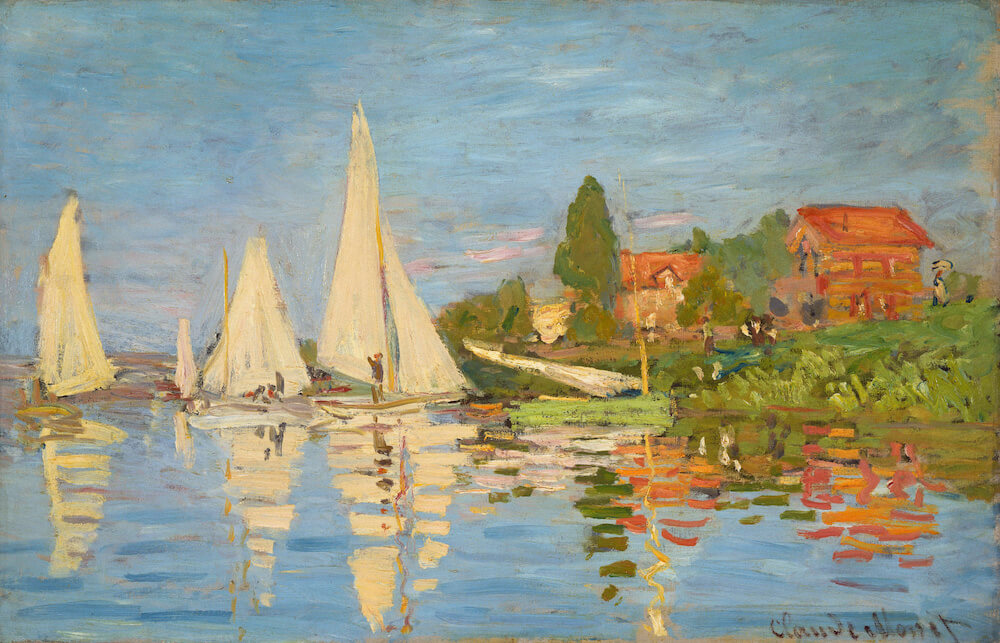
More than 40 years after boating became fashionable, Monet took great care with his depictions of boats of all descriptions. Here, he carefully crafts racing boats on the Seine - they competed at Argenteuil from the 1850s onward - and their magnificence in this masterpiece is a stunning portrayal. Many spectators were brought to Argenteuil for the racing by train - which linked the small rural community to the city.
Regattas at Argenteuil , 1872 is one of around 170 that Monet created during his time in Argenteuil (where more than half include the Seine). He cleverly gives the water movement by fragmenting or separating his brushstrokes. He was seeking to provide the fluidity of the air and water but he did find the ever-changing light a challenge. Despite this, he always beautifully captured the nuances and the vibrancy of the subject and themes he worked on Both Monet and his contemporary, Renoir, were fascinated with the sails of the boats that they captured in their paintings. They would often paint the same boats from the same spot and sought to overlook the detail in favor of an abstract rendering of light. Many commentators believe that Monet and Renoir working together helped the two artists to take their creations to new and innovative plains that they may not have achieved if not spurred on by the other.
Impression Sunrise
San giorgio maggiore at dusk, water lilies, the artist's garden at giverny, the poppy field near argenteuil, the waterlily pond, the garden of monet at argenteuil, poppy field, tulip fields, women in the garden, cliff walk at pourville, the garden at sainte-adresse, garden path at giverny, waterloo bridge, water lilies: morning, rouen cathedral, woman with a parasol.

Step-By-Step Guide: How To Paint A Sailboat Like A Pro
Alex Morgan
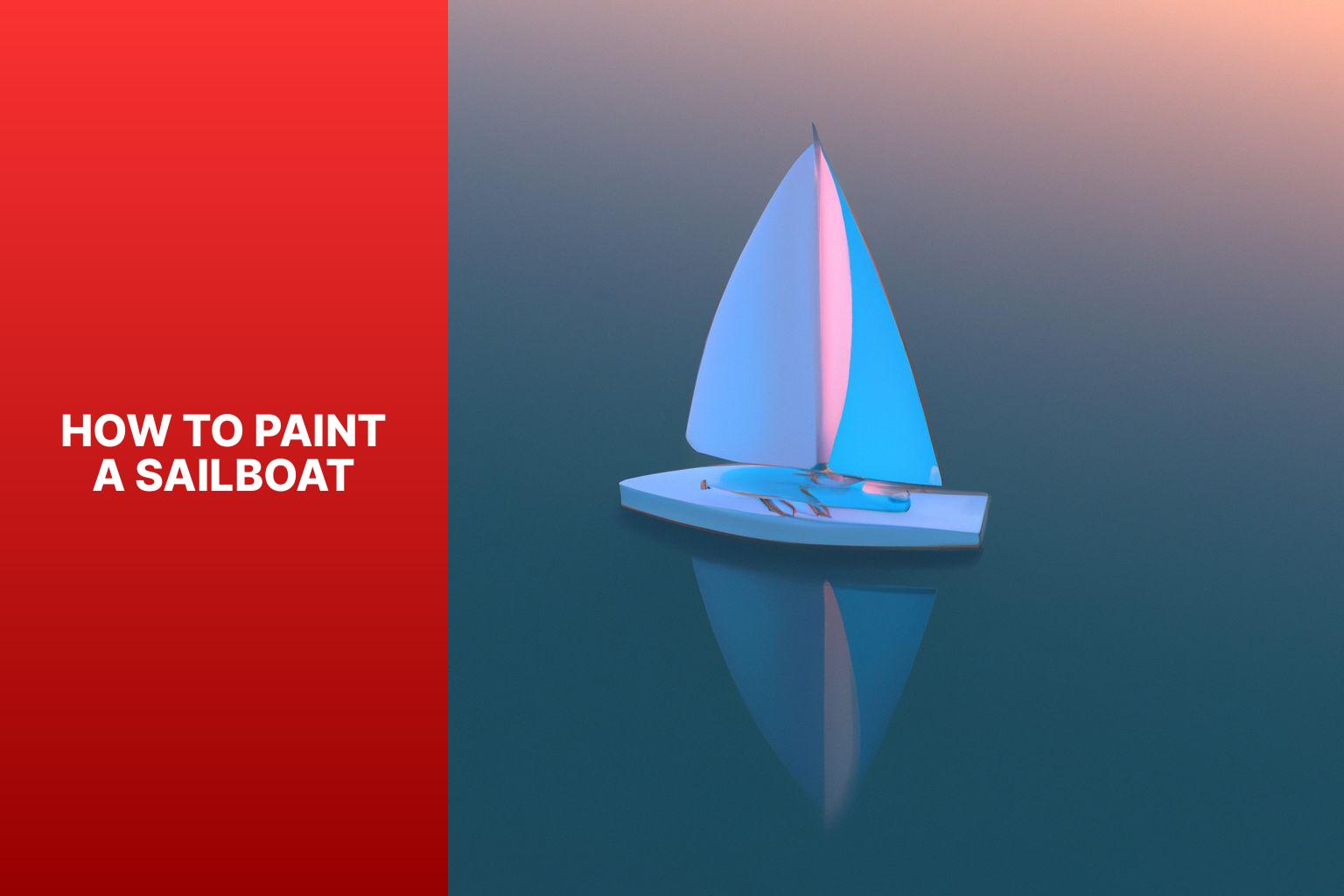
Painting a sailboat can be a rewarding and creative endeavor that not only enhances the appearance of your vessel but also offers protection against the harsh marine environment. Whether you’re a seasoned sailor or a novice boat owner, knowing how to paint a sailboat is a valuable skill. This comprehensive guide will take you through the step-by-step process of painting a sailboat, from gathering the necessary materials to applying the final touches.
To start, you’ll need a few essential materials for the painting project. These include:
1. Paint: Choose a marine-grade paint that is specially formulated for boat surfaces to ensure long-lasting durability.
2. Primer: Apply a suitable primer to create a smooth and uniform surface for the paint to adhere to.
3. Brushes and Rollers: Use high-quality brushes and rollers designed for marine applications.
4. Sandpaper: Prepare the boat’s surface by sanding it to remove any existing paint or imperfections.
5. Tape and Drop Cloths: Protect areas that you don’t want to paint by using tape and cover the surrounding surfaces with drop cloths.
Before diving into the actual painting process, it’s essential to prepare the sailboat properly. This involves a few key steps:
1. Cleaning the Surface: Remove dirt, grime, and any other contaminants from the boat’s surface using a suitable cleaning solution.
2. Repairing Any Damage: Inspect the boat for any cracks, chips, or other damage. Repair these areas using the appropriate techniques and materials.
3. Sanding the Surface: Smooth out the boat’s surface by sanding it with progressively finer grits of sandpaper. This helps the paint adhere better and provides a uniform finish.
Next, apply a primer coat to ensure proper adhesion and longevity of the paint job. Consider these steps:
1. Choosing the Right Primer: Select a primer that is compatible with the type of paint you’ll be using and suitable for the boat’s material.
2. How to Apply Primer: Follow the manufacturer’s instructions and apply the primer evenly across the entire surface of the sailboat. Use smooth, overlapping strokes for optimal coverage.
Once the primer has dried, it’s time to start painting the sailboat with the chosen paint. Keep these points in mind:
1. Selecting the Right Paint: Use a high-quality marine-grade paint that is specifically designed for boat exteriors and can withstand the effects of sun, saltwater, and other environmental factors.
2. Applying the Paint: Apply the paint using consistent and even strokes, following the manufacturer’s instructions regarding drying times and the number of coats required.
Add the finishing touches to complete the painting process:
1. Adding a Clear Coat: Consider applying a clear coat for added protection and a glossy finish. Ensure the clear coat is compatible with the paint used for the main coat.
2. Cleaning up: Clean your brushes, rollers, and any other painting equipment with the appropriate solvents, and dispose of any waste materials responsibly.
By following these steps, you can achieve a professional-looking paint job on your sailboat and enjoy the benefits of a visually appealing and protected vessel.
1. Painting a sailboat requires specific materials such as paint, primer, brushes and rollers, sandpaper, and tape and drop cloths. 2. Before painting, it is important to prepare the sailboat by cleaning the surface, repairing any damage, and sanding the surface. 3. When applying primer and paint, choosing the right products and following the correct application techniques are crucial for a successful outcome. 4. After painting, adding a clear coat and cleaning up are essential finishing touches to ensure a professional and long-lasting result.
Materials Needed for Painting a Sailboat
When it comes to painting a sailboat, having the right materials is crucial. In this section, we’ll dive into the essential items you’ll need to get started on your sailboat painting project. From paint and primer to brushes , rollers , sandpaper , and tape , we’ll explore each of these elements and how they play a role in achieving a successful paint job. So, grab your supplies, and let’s sail into the world of sailboat painting!
Painting a sailboat requires choosing the right paint for a successful and long-lasting finish. Here are some important points to consider:
1. Type of paint: Choose from marine enamel, polyurethane, or epoxy paint, as each type has its own advantages and suitability for different surfaces.
2. Durability: Opt for paint specifically formulated for marine use, with high UV resistance and excellent adhesion properties to withstand sun, saltwater, and abrasion.
3. Color selection: Select a paint color that suits your preferences and matches the overall aesthetics of your sailboat. Consider that darker colors absorb more heat and lighter colors may stain easily.
4. Finish: Decide between glossy or matte finishes. Glossy finishes are more reflective, durable, and easy to clean, while matte finishes provide a subtle and natural look.
5. Application method: Choose the application method that best suits your skill level and project size. Common methods include brushing, rolling, or spraying.
6. Coverage and drying time: Check the paint’s coverage rate and consider the number of coats needed. Also, take note of the drying time between coats, as it affects the project timeline.
7. Compatibility: Ensure the chosen paint is compatible with the primer and existing paint layers on your sailboat to prevent issues like peeling or bubbling.
8. Environmental considerations: Look for eco-friendly and non-toxic paints to minimize the impact on the marine environment.
When painting a sailboat, the primer is a crucial element to achieve a professional and long-lasting finish. Here are the key points to consider about primer:
Choose the Right Primer: It is important to select a marine-grade primer specifically designed for sailboats. This type of primer adheres well to various surfaces such as fiberglass, wood, and metal.
Apply the Primer: Make sure the surfaces are clean, dry, and free from any contaminants. To achieve a thin and even coat, you can use a brush or roller. Pay special attention to joints and areas that have been previously repaired. Allow the primer to dry completely before proceeding further.
Always remember that using the correct primer plays a crucial role in obtaining a smooth and durable paint finish on your sailboat. So take your time to choose the right primer and follow proper application techniques for optimal results .
3. Brushes and Rollers
When painting a sailboat, it’s crucial to have the appropriate brushes and rollers for a seamless and professional finish. Here are some crucial factors to consider:
1. Choose brushes and rollers of excellent quality that are suitable for the type of paint being used. Synthetic bristle brushes are effective for water-based paints , while natural bristle brushes are perfect for oil-based paints .
2. Take into account the size of the brushes and rollers. For intricate work and smaller areas, opt for smaller bristle sizes. On the other hand, for larger surfaces, larger brushes and rollers provide greater efficiency .
3. Make sure that the brushes and rollers are thoroughly cleaned and free from any residual paint or debris before starting the painting process. This will prevent any unwanted texture or imperfections on the sailboat’s surface .
4. Utilize a paint tray or bucket to hold the paint and dip the brushes or rollers into it. This will ensure even distribution and prevent any excess dripping.
5. Apply consistent pressure and strokes when using the brushes and rollers. Start painting from one end and work your way to the other, maintaining a uniform coat by maintaining consistent pressure.
By carefully selecting the appropriate brushes and rollers and using them correctly, you can achieve a paint job on your sailboat that looks professional .
4. Sandpaper
When painting a sailboat, sandpaper is crucial in preparing the surface for a smooth finish. Here are important points to consider about sandpaper:
1. Grit selection: Choose the right grit based on the surface condition. For rough sanding or removing old paint, use a coarse grit (80 or 100). For finer sanding and smoothing, use a medium or fine grit (120 or 220).
2. Sanding technique: Hold the sandpaper firmly and sand in a circular or back-and-forth motion. Apply even pressure to prevent unevenness. Sand evenly across the entire surface to remove imperfections or roughness.
3. Progression: Start with coarse grit and gradually switch to finer grits. This smoothes the surface and achieves a professional finish. Clean the surface between grit changes to remove dust or debris.
4. Safety precautions: Wear goggles and a mask to protect against sanding dust. Work in a well-ventilated area or use a dust collection system to minimize airborne particles.
5. Surface evaluation: After sanding, inspect for smoothness and uniformity. If rough spots or imperfections are visible, resand those areas before priming and painting.
The first documented use of sandpaper dates back to 13th-century China. Crushed shells, seeds, and sand were glued to parchment to create abrasive sheets. Over time, sandpaper production techniques evolved, and it became widely used in various industries for surface preparation, woodworking, and finishing applications. Today, sandpaper continues to be an essential tool for achieving smooth surfaces in painting and other projects.
5. Tape and Drop Cloths
When painting a sailboat, the use of tape and drop cloths is essential to protect areas from paint. Here are some important points to consider:
Choose painter’s tape to create clean lines, avoiding regular masking tape.
Prepare the surface by cleaning and drying it to ensure proper adhesion.
Carefully apply the tape along the edges, pressing firmly for good adhesion.
Use drop cloths or plastic sheets to protect surfaces from paint spills or splatters.
Overlap the tape slightly for smooth, clean edges and prevent paint seepage.
Remove the tape at a 45-degree angle when the paint is dry to the touch but not fully cured.
Following these steps will help you effectively use tape and drop cloths while painting a sailboat, ensuring a professional look and protecting desired areas.
Preparing the Sailboat for Painting
Get ready to transform your sailboat into a work of art! In this section, we’ll dive into the crucial steps of preparing your sailboat for painting. From cleaning the surface and repairing any damage to sanding it down, we’ll cover everything you need to know to ensure a smooth and long-lasting paint job. So grab your brushes and let’s get started on this exciting journey of turning your sailboat into a masterpiece .
1. Cleaning the Surface
When cleaning the surface of a sailboat before painting, it is important to follow these steps for thorough cleaning .
Start by removing any loose or flaking paint using a scraper or wire brush.
Next, wash the surface with a mild detergent or boat cleaning solution to effectively remove dirt, grease, or grime .
Rinse the surface thoroughly with clean water to ensure all cleaning solution residue is removed.
Take the time to inspect the surface for any stubborn stains or marks .
If needed, utilize a specialized boat hull cleaner to effectively eliminate them.
To create a smooth and even surface for paint adhesion, gently sand the surface with fine-grit sandpaper .
After sanding, wipe down the surface with a clean cloth or sponge to eliminate any dust or debris .
If you come across areas with mold or mildew , treat them with a mildew remover and allow it to sit for the recommended time before rinsing.
Ensure that the surface is completely dry before proceeding with painting or other preparation steps .
By diligently following these steps, you can guarantee that the sailboat’s surface is thoroughly cleaned and ready for painting , ultimately resulting in a professional and smooth finish .
2. Repairing Any Damage
To effectively repair any damage on a sailboat, follow these steps:
1. Assess the damage: Carefully inspect the sailboat for any cracks, scratches, or holes in the hull or deck.
2. Gather necessary materials: Make sure you have epoxy resin, fiberglass cloth, sandpaper, and a putty knife on hand.
3. Clean the damaged area: Use a mild detergent and water to remove any dirt, grime, or loose particles.
4. Sand the damaged area: Lightly sand the area to create a smooth surface for the upcoming repairs.
5. Apply epoxy and fiberglass: Follow the manufacturer’s instructions to prepare and apply the epoxy resin to the damaged area. Place layers of fiberglass cloth, ensuring complete coverage.
6. Sand and smooth the repair: Once the epoxy cures, carefully sand the repaired area for a smooth finish that seamlessly blends with the surrounding surface.
7. Prime and paint: If necessary, apply primer before painting to ensure proper adhesion. Then, paint the area to match the rest of the sailboat.
8. Clean up: Dispose of waste materials properly and clean your tools and work area.
By following these steps, you can expertly repair any damage on a sailboat while maintaining its structural integrity and overall appearance.
3. Sanding the Surface
To achieve a smooth and uniform surface, it is important to properly sand the boat’s surface. Gather all the necessary materials, including sandpaper of different grits ( 60 , 120 , and 220 ), a sanding block or power sander, and safety goggles . Before starting, make sure to protect areas that you don’t want to sand by using masking tape or drop cloths .
Begin the sanding process by using 60 grit sandpaper. This will effectively remove rough spots, peeling paint, or any previous coatings. When sanding, use a circular or back-and-forth motion with even pressure. It is crucial to avoid aggressive sanding that could potentially damage the boat’s structure.
Continuously check the surface for smoothness and evenness. Once the desired level has been achieved, switch to 120 grit sandpaper. This will further refine the surface and eliminate any remaining imperfections. Repeat this process with 220 grit sandpaper to ensure a completely smooth and uniform surface.
After sanding, ensure that the surface is thoroughly cleaned. Use a vacuum or tack cloth to remove any dust and debris. Take the time to inspect the sanded surface for any areas that may require additional sanding or touch-ups before moving forward with the painting process.
Throughout the entire sanding process, it is crucial to prioritize safety. Always remember to wear safety goggles and a mask to protect yourself from any airborne particles and dust that may be generated while sanding.
Applying Primer on the Sailboat
Applying primer on a sailboat is a crucial step in the painting process, ensuring a smooth and durable finish. In this section, we’ll dive into the essentials, from choosing the right primer to the step-by-step application techniques . So grab your brushes and get ready to give your sailboat the perfect foundation for a flawless paint job!
1. Choosing the Right Primer
Choosing the Right Primer
When painting a sailboat, selecting the appropriate primer is crucial for achieving a smooth and durable finish. Here are the steps to follow in choosing the right primer:
Assess the surface: Inspect the sailboat’s surface for damages such as cracks, dents, or peeling paint before choosing a primer.
Determine the surface type: Different sailboats may have fiberglass, wood, or metal surfaces. Select a primer designed for the specific surface.
Consider the environmental conditions: Take into account the climate and weather conditions the sailboat will be exposed to. Choose a primer with excellent corrosion resistance if the boat will be in harsh conditions or saltwater.
Choose the right primer type: There are epoxy primers, self-etching primers, and high-build primers available. Consider the needs of your sailboat and choose a primer with good adhesion and durability.
Consult professionals: Seek advice from paint specialists or experienced boat painters if unsure about which primer to choose.
By following these steps, you can ensure you choose the right primer for your sailboat, leading to a successful painting project.
Sailboat painting has a long-standing tradition in maritime culture. In the past, sailors used a mixture called “ship paint” consisting of tar and natural materials. This protected the boats from rot and deterioration and improved their performance in the water. Nowadays, sailors have a wide range of primers and paints designed specifically for sailboats. The right primer choice is critical for preserving and enhancing the beauty and functionality of sailboats. So, when embarking on a sailboat painting project, take the time to carefully choose the right primer for a successful outcome.
2. How to Apply Primer
To properly apply primer on a sailboat, follow these steps on how to apply primer:
1. Clean the surface: Before applying primer, it is important to ensure that the sailboat surface is thoroughly cleaned and free from any dirt, dust, or debris. To clean it effectively, use a mild cleaner or soap and water.
2. Repair any damage: Take a close look at the sailboat to identify areas that require repair. If you find any cracks, dents, or holes, use a suitable filler or epoxy to fix them.
3. Sand the surface: To create a smooth and even surface for painting, lightly sand the entire area that needs to be primed. Make sure to use fine-grit sandpaper and remove any loose or peeling paint.
4. Choose the right primer: Selecting the appropriate primer is crucial. Look for a primer that is specifically designed for boats and marine surfaces. Consider factors such as the type of paint, boat material, and any requirements specified by the manufacturer.
5. Apply the primer: Before applying the primer, stir it thoroughly to ensure proper consistency. Apply a thin and even coat of primer using a brush or roller. Work in small sections, and make long, smooth strokes along the natural lines of the boat.
By following these steps, you can effectively apply primer to your sailboat, creating a smooth and durable base for the paint.

Painting the Sailboat
Painting the Sailboat is where the real magic happens! Get ready to transform your plain sailboat into a work of art. In this thrilling section, we’ll dive into the nitty-gritty details of painting your beloved vessel. Discover the secrets to selecting the perfect paint that not only adds a pop of color but also protects your boat from the harsh elements. Then, we’ll uncover the techniques for applying the paint like a pro, ensuring a flawless finish that will make heads turn. Get ready to unleash your creativity and make your sailboat truly shine!
1. Selecting the Right Paint
Selecting the Right Paint
– Type of paint: When selecting the right paint, it’s important to consider the options available such as marine enamel paint , epoxy paint , and polyurethane paint . Each type has its own set of advantages and disadvantages, so it’s important to choose the one that best suits your needs and budget.
– Compatibility: Making sure that the paint you choose adheres well to the sailboat’s surface is crucial. This will help ensure a long-lasting and durable finish.
– Color: The color you choose for your paint should not only be based on your personal preference, but also on how well it complements the overall aesthetic of the sailboat. It’s also important to consider how the color will be affected by sunlight and weathering over time.
– Durability and resistance: In a marine environment, it’s essential to select a paint that is formulated to withstand the harsh conditions. Look for paint options that offer UV resistance , saltwater resistance , and resistance to scratches and abrasions.
– Application method: Depending on the paint you choose, different application methods may be required. Some paints may need to be sprayed, while others can be applied with a brush or roller. It’s important to choose a paint that aligns with your level of expertise and the equipment you have available.
– Budget: Consider your budget when selecting the right paint. Different paints come at different price points, so it’s important to choose one that offers a balance between quality and affordability.
2. Applying the Paint
To apply paint on a sailboat, follow these steps:
– Preparation: Clean and dry the surface before applying paint. Remove dirt, dust, or grease using a cleaning solution and cloth.
– Tape and protect: Mask off areas that you don’t want to paint, such as windows or hardware, using tape. Cover surrounding areas with drop cloths to prevent accidental splatters.
– Primer: Apply a coat of marine-grade primer to the sailboat following the manufacturer’s instructions. Allow the primer to dry completely.
– Select the paint: Choose a marine-grade paint suitable for the sailboat’s material. Consider durability, weather resistance, and color. Follow the recommended applicator type.
– Application: Apply paint to larger areas of the sailboat first using a roller or brush. Use smooth, even strokes for a uniform finish. Work in sections, moving from one part to another.
– Second coat: Assess if a second coat is needed once the first coat has dried. Apply a second coat following the same technique for a vibrant and long-lasting finish.
– Clean up: Clean brushes and rollers according to the paint manufacturer’s instructions. Dispose of used materials properly.
By following these steps, you can effectively apply paint to your sailboat and achieve a beautiful and protective finish.
Finishing Touches
The Finishing Touches section is where we add the final elements to our sailboat painting, giving it that extra dose of awe-inspiring sophistication . In this part, we’ll dive into two key sub-sections: Adding a Clear Coat and Cleaning up . Prepare for the exhilarating moment of applying the clear coat, which not only enhances the colors but also protects the artwork for years to come. Plus, we’ll share some neat tips on how to clean up any stray brushstrokes or smudges effortlessly. Let’s make this sailboat masterpiece shine !
1. Adding a Clear Coat
To incorporate the provided keywords naturally in the provided text, the rewritten text can be as follows:
To add a clear coat to a painted sailboat and ensure long-lasting protection for your sailboat, follow these steps:
Ensure the painted surface is clean and completely dry .
Use a high-quality clear coat designed for marine applications , specifically for adding a clear coat.
Apply the clear coat in thin , even layers using a brush or spray gun .
Allow each layer to dry completely before applying the next layer, contributing to the process of adding a clear coat.
Cover the entire surface of the sailboat with the clear coat for maximum protection , fulfilling the purpose of adding a clear coat.
Check for any drips or uneven spots and sand them down before adding more coats, which is an essential part of adding a clear coat.
Follow the manufacturer’s instructions to determine the number of coats needed, a vital step in successfully adding a clear coat.
Adding a clear coat to a painted sailboat is crucial for protecting the paint job from UV radiation , saltwater , and other damaging elements. By following these steps and using the appropriate materials for adding a clear coat, you can achieve a professional-looking finish and ensure long-lasting protection for your sailboat.
2. Cleaning up
Cleaning up after painting a sailboat is an important step that ensures a neat finish and maintains the longevity of your painting tools. To effectively clean your sailboat, follow these steps:
- Remove excess paint from brushes and rollers.
- Clean brushes and rollers with warm soapy water.
- Rinse brushes and rollers to remove soap residue.
- Allow brushes and rollers to air dry completely.
- Dispose of leftover paint or materials according to local regulations.
- Remove protective tapes and drop cloths from the sailboat.
- Collect debris or trash and dispose of properly.
- Wipe down the sailboat with a clean cloth to remove dust or particles.
- Inspect the area for touch-ups or missed spots and make necessary corrections.
- Store brushes, rollers, and other painting materials in a clean and dry place for future use.
These steps will help you incorporate the cleaning up process into your sailboat painting routine effectively. Sailors have always taken pride in keeping their vessels clean for efficiency and well-being. Proper cleaning techniques have been passed down through generations to preserve sailboats. Today, sailors continue to adhere to these principles to honor the traditions of the sea.
Some Facts About How To Paint A Sailboat:
- ✅ Painting your sailboat is essential for its safety and protection. (Source: Life of Sailing)
- ✅ The paint acts as a barrier against salt, barnacles, and rotting, keeping your sailboat well-maintained. (Source: Life of Sailing)
- ✅ Painting your sailboat yourself can save you money and allow you to acquire a valuable skill. (Source: Life of Sailing)
- ✅ The frequency of painting depends on the type of paint and the amount of time your boat spends in the water. (Source: Life of Sailing)
- ✅ Choosing a sailboat paint that contains copper provides biocidal properties, preventing the attachment of sea life. (Source: Life of Sailing)
Frequently Asked Questions
How important is painting a sailboat for its safety and protection.
Painting your sailboat is essential for its safety and protection. The paint acts as a protective layer, guarding against saltwater corrosion, barnacles, and rotting. It also adds an added layer of aesthetic appeal to your boat, making it stand out.
What are the benefits of painting a sailboat yourself?
Painting your sailboat yourself offers several benefits. It allows you to save money as you won’t have to hire a painting contractor. It provides an opportunity to learn a valuable life skill. It allows you to add your creative flair and personalize the paint job according to your preferences.
Which paint brands are recommended for painting a sailboat?
When painting a sailboat, it is recommended to choose paint brands that contain copper. Copper acts as a biocide, preventing the attachment of sea life to the boat’s hull. This helps in maintaining the boat’s performance and reduces the need for frequent cleaning and maintenance.
What is the frequency of painting a sailboat?
The frequency of painting a sailboat depends on the type of paint used and the amount of time the boat spends in the water. Bottom paint, which protects the hull, should be applied annually. On the other hand, top paint, which adds color and gloss to the boat, can be done every 3 years.
What are the necessary tools for painting a sailboat?
When painting a sailboat, you will need various tools such as sandpaper, paint, primer, brushes, rollers, paint thinner, and solvent. It is essential to have a well-ventilated workspace and ensure you wear safety gear such as a face mask, goggles, and gloves.
What is the process for painting a sailboat?
The process for painting a sailboat involves several steps. First, inspect the boat for any damage and make necessary repairs. Next, sand the surface using different grits of sandpaper to achieve a smooth finish. Then, apply a layer of primer to improve adhesion. Apply multiple coats of paint, allowing sufficient drying time and sanding between each coat for a glossy looking boat. Good luck!
About the author
Leave a Reply Cancel reply
Your email address will not be published. Required fields are marked *
Save my name, email, and website in this browser for the next time I comment.
Latest posts

The history of sailing – from ancient times to modern adventures
History of Sailing Sailing is a time-honored tradition that has evolved over millennia, from its humble beginnings as a means of transportation to a beloved modern-day recreational activity. The history of sailing is a fascinating journey that spans cultures and centuries, rich in innovation and adventure. In this article, we’ll explore the remarkable evolution of…

Sailing Solo: Adventures and Challenges of Single-Handed Sailing
Solo Sailing Sailing has always been a pursuit of freedom, adventure, and self-discovery. While sailing with a crew is a fantastic experience, there’s a unique allure to sailing solo – just you, the wind, and the open sea. Single-handed sailing, as it’s often called, is a journey of self-reliance, resilience, and the ultimate test of…

Sustainable Sailing: Eco-Friendly Practices on the boat
Eco Friendly Sailing Sailing is an exhilarating and timeless way to explore the beauty of the open water, but it’s important to remember that our oceans and environment need our protection. Sustainable sailing, which involves eco-friendly practices and mindful decision-making, allows sailors to enjoy their adventures while minimizing their impact on the environment. In this…
- AI Generator
2,393 Sailboat Paintings Stock Photos & High-Res Pictures
Browse 2,393 sailboat paintings photos and images available, or start a new search to explore more photos and images..
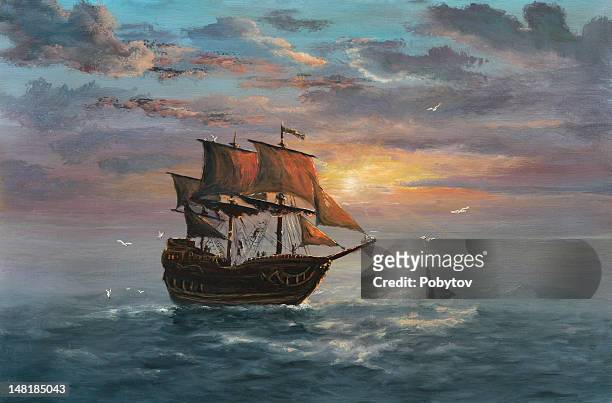
- BOAT OF THE YEAR
- Newsletters
- Sailboat Reviews
- Boating Safety
- Sailing Totem
- Charter Resources
- Destinations
- Galley Recipes
- Living Aboard
- Sails and Rigging
- Maintenance

How to Paint Sailboat Decks
- By Tom Zydler
- Updated: March 14, 2013
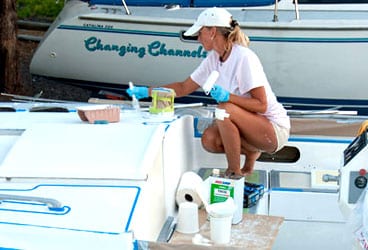
Painting a sailboat
Janet Van Leuwen and Steve Van Wig own a Whitby 42. Looking at their beautiful, well-groomed ketch, you’d never guess it was built in 1982. The name on the stern, Lunacy , may be the only hint of the incredible amount of work that the couple has put into rejuvenating their boat. Bringing the decks and the coachroof top to their present glory was a large part of the project, as these tasks would’ve been on any glass boat more than 25 years old. This is how they did it. And frankly, this is how it should be done.
Before the couple could begin doing any prep work for painting, the deck hardware had to be removed. They needed access to tight spaces where the horizontal deck surface turned into vertical bulwarks, around the masts’ partners, near the windlass base, and so on. (They also removed the chainplates, which needed attention as a separate project.) Out came all stanchions, their bases, various padeyes, winches—anything and everything, in fact, that could obstruct the power sanders required to remove the worn-down, cracking, original nonskid pattern. Steve then used silicon sealant to plug all the fastener holes that would be reused; silicon repels paint, so the fastener locations would be visible when they began reinstalling the hardware.
Donning breathing masks and kneepads, the couple spent days grinding the old surfaces with 80-grit discs. Using thick foam pads on machines running at high rpm prevented any gouging in the laminate. Smaller sanders (both round and square) helped them to negotiate tight turns; at times, they resorted to manual sanding blocks. Working with thickened polyester and epoxy resins, Steve filled several hairline cracks and dings. They then sanded this filler with 80-grit, then 100-grit, and finally 120-grit sandpaper to achieve a smoother surface before vacuuming up all the accumulated dust.
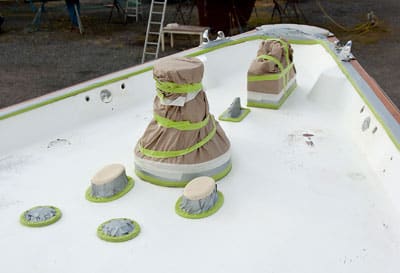
Next, to keep paint drips off teak handrails, the windlass, and the portholes, they masked these with heavy paper and tape. Right after the final wipe with a cleaning solvent, they took two days to roll and brush on two coats of epoxy primer, the base for the final topcoat. Over the next few days, the primed surfaces were sanded with 120-grit paper, followed again by vacuuming and hosing the resulting dust. Afterward, Janet cleaned all the surfaces with non-sticky tack cloths designed for multipart polyurethanes.
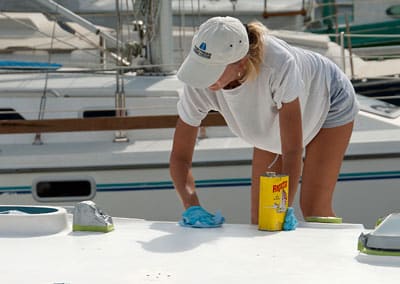
At this juncture, Steve identified and outlined the future nonskid areas, then spent a couple of days taping their inner edges with long-life 3M masking tape. At the corners, joining short lengths of tape on tight curves required meticulous care. After they wiped everything with cleaning solvent, they applied the first coat of multipart polyurethane to all the surfaces outside the future nonskid. Two more topcoat applications followed within allowable, 16-hour intervals. After sanding with 220-grit paper, dusting, using the tack rag, and wiping the solvent, they rolled and brushed on the fourth and final topcoat. The solvent-resistant, ultra-smooth, high-density foam-roller covers and quality brushes delivered the best finish. Working in the hot Florida sun required frequent additions of brushing reducer.
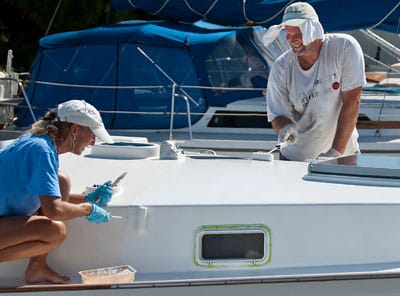
After allowing 48 hours to fully cure, they removed the masking tape. Fresh tape was then applied along the outside margins of the nonskid areas. All was ready for applying the nonskid coats. But first Steve spent a few days experimenting. He mixed his own color tints—too dark, and you couldn’t walk barefoot on the sun-heated deck; too white, and the deck glare was intolerable.
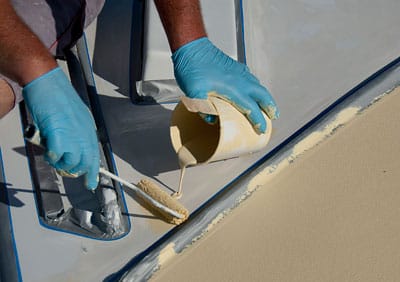
Also, he tested paint combined with various nonskid additives on scrap plywood; very coarse grit could damage human skin if a sailor knelt or fell on deck. He decided to combine equal amounts of coarse and fine grit. Significantly, this mixture prevented the coarse grit from settling down in the paint in lumps. On the big day, Steve and Janet mixed the activator with the paint base in a large container, added the correct nonskid grit, poured in the brushing reducer, and thoroughly stirred it all. After pouring small dollops within a taped area, Steve spread it out with a roller with Janet assisting, adding more paint or grit as necessary. She also wiped up Steve’s occasional paint drips with a solvent-soaked rag. The work went quickly and smoothly, though constant stirring of the paint/grit mixture was absolutely vital.
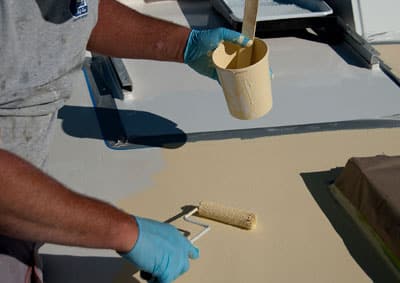
Twenty-four hours passed before heavy, late summer rain rolled in. By then, the paint had cured hard, and the coachroof was finished. They then repeated the whole operation to paint the deck. Nobody said rejuvenating a classic-plastic yacht would be quick or easy. But when the entire project was finished and Lunacy ‘s deck sparkled, the two sailors realized that all their meticulous efforts had been well worth it.
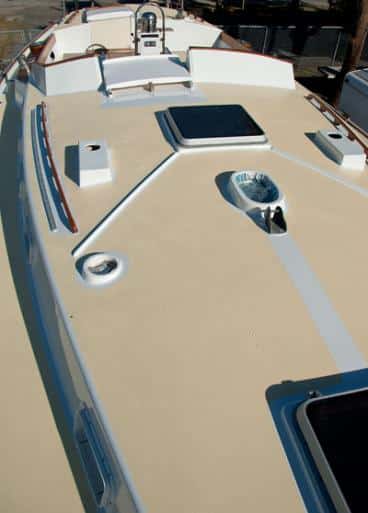
Steps:** 1. In preparation for the job, much of the deck hardware, including the stanchions, had to be removed. The remaining gear was carefully and completely covered and masked. 2. All the fastener holes were filled with silicon sealant, and the couple spent days grinding the old surfaces. Then Janet used a solvent wash to ensure a strong bond with the primer paint. 3. After dings and cracks were repaired and sanded, two coats of epoxy primer were applied. 4. Following another round of sanding, vacuuming, cleaning, and taping, the couple rolled and brushed on a fresh coat of Awlgrip topcoat. 5. After four coats of Awlgrip, it was time for the nonskid. First, Steve experimented with colors and grits. Once under way, he poured on a dollop of pre-mixed paint and spread it evenly. Note the paint stirrer, which was used to prevent the grit from settling. 6. Stirring frequently, to make sure the coverage was even in each masked area, Steve worked quickly and efficiently while Janet addressed small splashes with a solvent-soaked cloth. 7. Voilà! Once the masking tape was removed, the fresh decks fairly glistened.
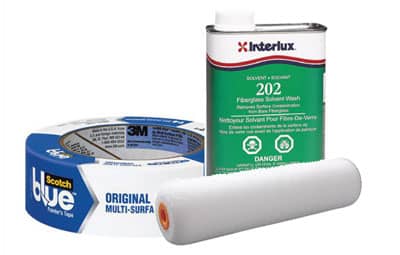
What You’ll Need: • Hook-and-loop sanding discs, sized to fit the sander pads • Sheets of sandpaper of grits 80, 100, 120, 180, 220, and 320 • 3M masking tape in widths of 1/2 inch (No. 256), 1 inch (No. 2090), and 2 inches (No. 225) • Gerson synthetic tack cloths • Roller frames and roller covers, with phenolic cores: ultra-smooth, high-density 4-inch and 6-inch roller covers (available from Home Depot; for the primers and topcoats) and Yellow stripe 3/8-inch nap (from West Marine; for the nonskid paint mixture) • Good-quality varnishing brushes • Cabisil (colloidal silica) thickening agent for making fairing putty with epoxy or polyester resin • Plastic putty knives • Interlux Fiberglass Solvent Wash 202 (for cleaning surfaces) • M.E.K. solvent (for cleaning all brushes) • Disposable paper/plastic pails of various sizes • A dozen wooden paint stirrers • Interlux Epoxy Primekote • Awlgrip topcoat (with Brushing Reducer and brushing converter) • Awlgrip Griptex nonskid additive (fine and coarse grades) • Ryobi and Makita random orbital sanders • Ryobi 6-inch palm polisher (used with a foam pad as a sander in complex spaces) • 3M breathing dust masks, ear protection, and solvent-resistant gloves
Longtime CW contributor Tom Zydler and his wife, Nancy, plan on spending this summer exploring the coast of Labrador aboard their Mason 44, Frances B .
- More: boat maintenance , How To , maintenance
- More How To

How To Prioritize Your Sailboat’s Spring Checklist

How to Protect Your Spars from Corrosion

Sailing Totem Refit Series: The Forward Head Makeover

Fatty Goodlander: Dealing with Chafe While Cruising

TradeWinds Debuts 59-foot TWe6 Smart Electric Yacht

Good Bread for Good Health

Center of Effort
- Digital Edition
- Customer Service
- Privacy Policy
- Email Newsletters
- Cruising World
- Sailing World
- Salt Water Sportsman
- Sport Fishing
- Wakeboarding

Sailboat Art - Canvas Prints
- Transportation
- LIMITED EDITIONS
- POPULAR TEST
- COLOR MATCH
- TRENDING:SELLING
- TRENDING:FAVORITES
Sail Away II
Set To Sail
White Whale Square
Sail Regatta
Regatta at Argenteuil,...
Adela, 1908
Magnificence
Sailboat Navy Blue Patent...
1930s Single Catamaran On...
Wave (Night)
Sail Away I
Cape Cod Sail
Starry Night Seascape
Wind And Waves VII
Dogs & Sailboats
Antique Ship Blueprint II
At the Regatta I
Nautical Love (Sail Boat II)
Sailboats racing in the...
Into The Distance
Ship In A Bottle
Nautical, Sailboat
Sea Diamonds
The Lights And The Silent...
Sailboat Vintage Patent...
Seaside III
Sailboat 4 Red Patent...
Sailboat Green Patent...
Sailboat 4 Vintage Patent...
Night Odyssey Square
The Storm on the Sea of...
White Whale
Sailboats at Sunrise
Seascape Near Les Saintes...
Cliffs and Sailboats at...
Coastal Glow
Clipper Ship Surprise
Waiting for the Sun
Breezing Up ( A Fair...
King Of Cups
Beach Town Summer I
- Recently Viewed
Please sign in to use this feature.


Sailboat Bottom Paint: 10 Best Paints

Last Updated by
Daniel Wade
June 15, 2022
If you leave your boat without protection, it's beyond question that it will start attracting several marine organisms such as slime, algae, mussels, barnacle, and seaweed. This will cover the bottom of your sailboat and may negatively affect your boat's speed and fuel efficiency.
This is exactly why you need to apply the best sailboat bottom paint on your boat.
The freedom that sailing and being off land gives you are immense and almost unmatched.
But do you know that having multiple organisms such as algae, slime, barnacle, seaweed, and mussels grow on your boat can throw everything out on the wind and leave you with a very unreliable boat?
These pesky hangers will put a huge dent in your boat's speed, its movement, fuel efficiency, and overall aesthetic.
That's why you need the best sailboat bottom paint to greatly minimize any damage that might be caused to your boat's hull by marine biological growth.
Also known as antifouling paint, bottom paint is essentially a paint or coating that's specifically designed with elements that prevent various marine organisms such as algae, seaweed, barnacles, slime, and mussels from attaching themselves to your boat's hull or any other part of the boat that's below the waterline.
One of the most important elements of bottom paint is the inclusion of a biocide and copper is the most common. This may, however, depend on the type of boat that you have, how, and where you always use it.
But because there's an ocean of bottom paints out there on the market, choosing the best sailboat bottom paint can be an overwhelming task for most of us.
Fortunately, you can always count on us to make it a lot easier for you. We've gone through many bottom paints and we do not doubt that we've selected the most effective, reliable, and best sailboat bottom paint.
Our unbiased selections will not only match your needs and budget but will be available in a variety of colors to complement and augment your boat's visual appeal.
Table of contents
What to Consider when Purchasing Sailboat Bottom Paint
If you're on the market for the best sailboat bottom paint, it's crucial to go for top quality; something that will offer efficiency, top speed, and excellent performance for your sailboat. With that in mind, here are a few things to consider before spending your hard-earned money on bottom paint.
Your Sailing Location
Where are you planning to sail? Is it on a freshwater body or in a saltwater location? This is essential in helping you determine whether to go for a bottom paint that's meant for saltwater, freshwater, or both. It's generally recommended that you go for a bottom paint that will serve you perfectly well in both freshwater and saltwater. This gives you the versatility of sailing anywhere without worrying about marine organisms damaging your boat's hull.
Launch Time and Recoat Time
It's important to keep in mind that bottom paint products have specific launch time limits. The idea here is to ensure that you launch it within the required timeframe and ensure that recoating is done as required. You should, therefore, choose a bottom paint that offers a lengthy launch and recoat time while offering durable protection for your vessel is the right thing to do.
Type of Boat
You should determine whether your boat is made of wood, fiberglass, or aluminum and go for bottom paint that's suitable for that particular surface. Many bottom paints work perfectly with fiberglass but some work great with aluminum or wooden surfaces.
The Fouling Condition
Having a deeper idea of the type of fouling that you might deal with can be crucial when buying the right bottom paint for you. Whether you're dealing with slime, algae, mussel, or any other type of marine organism, knowing the type of fouling you're dealing with will make it a lot easier to pick the best sailboat bottom paint for your vessel.
Best Sailboat Bottom Paint
Rust-oleum marine flat boat bottom antifouling paint.
As one of the most respected brand names in the bottom paint industry, Rust-Oleum is known for producing some of the best sailboat bottom paint and the Marine Flat Boat Bottom Antifouling Paint is one of them. This bottom pain is designed to be suitable for various conditions (both freshwater and saltwater) and is designed with moderate copper that works great if you are environment-conscious.
This bottom paint does an excellent job of offering a protective coating to ensure that your boat is free of all sorts of unwanted marine organisms. You'll love this paint because it is thick and spreads so easily and will not be a problem even if you're a beginner. This bottom paint offers top-notch antifouling properties and is very easy to apply as long as you use a soft brush and mix it carefully. This is a great bottom paint choice that will offer a sleek multi-season finish and ensure that your boat's hull is always awesome and in great condition.
- Easy and simple to apply
- Great for both freshwater and saltwater
- Offers gentle fouling conditions
- Excellent in antifouling
- Offer a sleek and awesome finish
- Quite expensive
- Has a very strong smell that can cause headache
Interlux Fiberglass Bottomkote Antifouling Paint
This is another great brand that is considered as one of the best bottom paint in the sailing world. Even though it's a bit pricey, it offers great features that will ensure that your boat remains in tip-top shape. It is an excellent option if you're looking for a sailboat bottom paint that brings to the fore a unique dual resin approach.
This is a very reliable bottom paint that will not only prevent your boat's hull from the effect of marine organisms but also prevent premature deterioration. It offers an awesome polishing action and is perfecting if you want to discard unnecessary paint buildup. This bottom paint is also very economical and a small quantity will cover a considerable surface area of your boat's bottom.
This is, without a doubt, a superb buy in terms of its practicality and economical nature. It is excellently formulated to prevent marine organisms from damaging your boat and also to ensure that premature wear and tear doesn't exist in your vocabulary.
- It's formulated with a unique dual resin approach to prevent premature wear and tear
- It prevents early decline
- It prevents unnecessary paint buildup
- Great for ensuring that your boat is fuel effective
- Great for all conditions (both freshwater and saltwater)
- It's expensive
- The quantity and size can be misleading
TotalBoat JD Select Bottom Paint
As one of the few bottom paints that's formulated with low Volatile Organic Compounds (VOC), this bottom paint is one of the most cost-effective on this list. With one gallon, you can easily cover about 400 square feet and the application is a breeze since it's even much easier to clean up.
When you purchase this bottom paint, the package will come complete with a pair of latex gloves, a wooden stir stick, an abrasive pad, a metal tray kit, a paint suit, a roller, a painter's tape, and many more. The inclusion of all these accessories makes it a quite cost-effective purchase.
Again, this is one of the most durable bottom paints. Apply it on your boat's hull and you're guaranteed that it will offer excellent protection for the next 18 months. On the downside, this paint is too thick and you'll have to buy an excellent thinner for it to work perfectly.
Nonetheless, this is an ablative bottom paint that is easy to apply and does an excellent job of protecting your boat's bottom for close to two years.
- Perfect for all conditions
- Easy to apply and clean up
- Can improve your boat's speed and fuel efficiency
- Comes with all accessories required for the paint job
- It's one of the best water-based bottom paint products in the industry
- It contains low VOC
- You'll need a top-quality thinner for it to work perfectly
Aquaguard Water-based Antifouling Bottom Paint
An excellent choice for both wooden and fiberglass boats, this is the most perfect bottom point for saltwater conditions. This is a water-based bottom paint that's very easy to apply and clean up (using soap and water) and is formulated with an ablative action that makes it superb for preventing any marine organism that may negatively affect your boat.
This is a bottom paint that is EPA-approved and surpasses the set VOC standards. It has an extended shelf life and offers durable protection for your sailboat. It doesn't contain toxic fumes and is great even for novices. Its drying time is also excellent, so you won't wait for far too long to get your boat out there on the water.
- Excellent for saltwater conditions
- Application and cleaning is very easy
- It's approved by the US EPA
- You don't have to use a primer
- The color selection is limited
- A bit pricey
Pettit Hydrocoat
This is another water-based bottom paint that offers outstanding ablative properties that will protect your boat from marine organisms throughout the seasons. It offers good value for money and is easy to apply and clean up with just water and soap.
We're talking about a bottom paint product that will protect your boat's hull for months on end. You also do not need a full tank of the paint to complete the job. With just a single gallon, you can be sure to complete an area as big as 430 square feet.
This is also one of the few bottom paints that can perfectly prevent your boat from damage when being trailered, launched, or beached. More importantly, it's not irritating to the nose and eyes because it has low VOC.
- It will dry in 3 hours
- It's easy to apply and clean up
- It offers multi-season protection
- It's not irritating to the eyes and nose
- It's quite economical
- May not be the best in antifouling
- You have to apply at least two coats
SEA HAWK PAINTS Aluminum Boat Paint
One of the best aluminum boat paints in the market, this bottom paint is formulated to offer quick-dry corrosion-blocking, high-solid features. This bottom paint is specifically manufactured to be used in aluminum boats and doesn't require the addition of any primer.
While it doesn't have an antifouling feature, it stands out and can be used both below and above the waterline as it is risk-free and free or chromate. It is also formulated to offer a unique dual resin approach and can be used both as paint and a primer at the same time.
This is a great paint for both freshwater and saltwater conditions and can be applied as a primer or topcoat on a fiberglass boat. This is an excellent sailboat boat bottom paint that's worth every coin as it is practical, versatile, and can combat both rusting and lifting.
- The application and cleanup process is easy
- Great for both freshwater and saltwater conditions
- It doesn't require a primer
- Can be used as primer or topcoat in fiberglass boats
- Can prevent rusting and lifting
- It has quick-dry and anti-corrosion features
- Can produce deadly fumes
TotalBoat Spartan Boat Bottom Paint
If you've been looking for a practical, reliable, and cost-effecting bottom paint that will offer durable performance and protection, the Spartan Boat Bottom Paint. Perfect for both freshwater and saltwater, it can be perfect for protecting your boat and ensuring that it is fuel-efficient and reliable.
This bottom paint is formulated with advanced copolymer ablative to ensure that it doesn't deteriorate instantly. This is a very dependable bottom paint that will serve you perfectly throughout the year and will ensure that your boat easily defies fouling while reducing unnecessary buildup and sanding on your boat.
This is a very adaptable bottom paint that not only offers great value for money but is very easy to apply. More importantly, it is very durable and will protect your vessel for at least 12 months on any type of water.
- Great for all types of water
- It offers a very durable protection
- Available in a wide variety of color selection
- Offer a visually appealing abrasion-proof finish
- The included accessories aren't up to the right quality
To this end, we must put a lot of emphasis on the importance of having the right bottom paint for your boat. In addition to being an antifouling agent, bottom paint will significantly increase the fuel efficiency of your boat and ensure that it performs optimally at all times. Of course, you do not want to diminish your sailing escapades or have your nice and beautiful vessel damaged by marine organisms just because you didn't apply the right sailboat bottom paint. If you're unsure how to proceed, here's how to paint a sailboat.
Related Articles
I've personally had thousands of questions about sailing and sailboats over the years. As I learn and experience sailing, and the community, I share the answers that work and make sense to me, here on Life of Sailing.
by this author
Repairs and Maintenance
Sailboat Upgrades
Most Recent

What Does "Sailing By The Lee" Mean?
October 3, 2023

The Best Sailing Schools And Programs: Reviews & Ratings
September 26, 2023
Important Legal Info
Lifeofsailing.com is a participant in the Amazon Services LLC Associates Program, an affiliate advertising program designed to provide a means for sites to earn advertising fees by advertising and linking to Amazon. This site also participates in other affiliate programs and is compensated for referring traffic and business to these companies.
Similar Posts

How To Choose The Right Sailing Instructor
August 16, 2023

Cost To Sail Around The World
May 16, 2023

Small Sailboat Sizes: A Complete Guide
October 30, 2022
Popular Posts

Best Liveaboard Catamaran Sailboats
December 28, 2023

Can a Novice Sail Around the World?
Elizabeth O'Malley

4 Best Electric Outboard Motors

How Long Did It Take The Vikings To Sail To England?

10 Best Sailboat Brands (And Why)
December 20, 2023

7 Best Places To Liveaboard A Sailboat
Get the best sailing content.
Top Rated Posts
Lifeofsailing.com is a participant in the Amazon Services LLC Associates Program, an affiliate advertising program designed to provide a means for sites to earn advertising fees by advertising and linking to Amazon. This site also participates in other affiliate programs and is compensated for referring traffic and business to these companies. (866) 342-SAIL
© 2024 Life of Sailing Email: [email protected] Address: 11816 Inwood Rd #3024 Dallas, TX 75244 Disclaimer Privacy Policy

IMAGES
VIDEO
COMMENTS
Paintings of Sailboats. Ali Wisch. Updated: Aug 2, 2017. Original: Dec 15, 2016. With water covering nearly seventy-one percent of the earth's surface, it is no surprise that people have been portraying the sea through marine art since prehistoric times. There are many marine artists who are keeping this tradition alive: here are six of them.
Paintings , 18 W x 24 H x 1.6 D in. Sophia Oshodin. United Kingdom. $1,380. 1 - 50 of 437 paintings. 50 Results Per Page. Shop Fine Art Sailboat Paintings created by thousands of emerging artists from around the world. Buy original art worry free with our 14 day satisfaction guarantee.
Table of Contents. 1 Our Favorite Famous Ship Paintings. 1.1 The Storm on the Sea of Galilee (1633) by Rembrandt; 1.2 The Home Fleet Saluting the State Barge (1650) by Jan van de Cappelle; 1.3 Nelson's Inshore Blockading Squadron at Cadiz (1797) by Thomas Buttersworth; 1.4 Battle of Trafalgar (1805) by Louis Philippe Crepin; 1.5 A First Rate Man-of-War Driven Onto a Reef of Rocks ...
Sky and water are dappled, and the boats are appear bunched together as they move gracefully along the river. All this gives the painting a peculiar kind of vitality and charm. Le Havre, Fishing Boats Leaving the Port, 1874. Claude Monet (1840-1926) Courtesy of Wikimedia Commons. It's a wet morning, but a crowd has gathered on the ...
1 A Brief History of Marine Art. 2 Top 10 Most Famous Ship Paintings. 2.1 The Storm on the Sea of Galilee (1633) by Rembrandt van Rijn. 2.2 Seascape in the Morning (c. 1640 - 1645) by Simon de Vlieger. 2.3 The Trojan Women Setting Fire to their Fleet (c. 1643) by Claude Lorrain. 2.4 Battle of Trafalgar (1805) by Louis Philippe Crépin.
New Yorker October 20th, 1956 Painting. 1 - 72 of 22,153 sailboat paintings for sale. Featuring all kinds of sailboats, from sloops to schooners and yachts to yawls, this collection of paintings has something for everyone. These pieces of art invoke deep emotion with pictures of stormy weather, sleepy harbors and majestic, three-masted ships.
Sailing in Painting: Wassily Kandinsky, The Golden Sail, 1903, Lenbachhaus, Munich, Germany. This woodblock print by Wassily Kandinsky is inspired by folk art from his native Russian Empire. 6. Sail like a Fauve with Vlaminck. Sailing in Painting: Maurice de Vlaminck, White sailboat at Chatou, 1907, private collection.
Edouard Manet's Boating is a masterpiece of Impressionism that captures the joy and freedom of a summer day on the Seine. The painting depicts a couple in a sailboat, with the woman wearing a striking white dress and hat. The Metropolitan Museum of Art offers a detailed analysis of the painting's composition, style, and context, as well as its relation to other works by Manet and his ...
Paintings , 36 W x 36 H x 4 D in. Christina Penrose. United States. $7,400. 1 - 50 of 479 paintings. 50 Results Per Page. Shop Sailboat Oil Paintings created by thousands of emerging artists from around the world. Buy original art worry free with our 14 day satisfaction guarantee.
The subject, sailboats docked at harbor, is filled with interesting shapes and patterns. This plays well into Payne's style and is perhaps why he created so many of these paintings. In many cases, the sailboats extend or just meet the top edge of the painting. This goes against standard composition theory, but it works.
Crepin's painting portrays, with great accuracy, the close-quarters combat that so often occurred in naval battles. 4. Snow Storm - Steam-Boat off a Harbour's Mouth - J.M.W Turner. As noted above, J.M.W. Turner was among the most famous artists who focused on the life and voyages of sailors and their ships.
Learn how to paint a sailboat scene in this, step by step, acrylic painting tutorial with artist Ashley Krieger. This lesson will teach you the steps to take...
They would often paint the same boats from the same spot and sought to overlook the detail in favor of an abstract rendering of light. Many commentators believe that Monet and Renoir working together helped the two artists to take their creations to new and innovative plains that they may not have achieved if not spurred on by the other.
In today's acrylic painting tutorial we paint a sailboat out on the ocean at sunset. This relaxed painting lesson is done in real time and will cover the ste...
Blocking in the background is an important step in painting a sailboat with acrylics. It establishes the composition and sets the tone for the rest of the painting. Here is a step-by-step guide on how to block in the background: 1. Choose the colors for the background based on the atmosphere and mood you desire.
1. Paint: Choose a marine-grade paint that is specially formulated for boat surfaces to ensure long-lasting durability. 2. Primer: Apply a suitable primer to create a smooth and uniform surface for the paint to adhere to. 3. Brushes and Rollers: Use high-quality brushes and rollers designed for marine applications. 4.
After you have finished with the 600 grit sandpaper, it is time to move on to 800, then 1200. This process is important so you will be painting on as smooth a surface as possible. It is then a good idea to wipe the surfaces of the boat down with a damp cloth to remove any of the dust and flakes of metal/wood.
Summer Watercolor Drawing Background. of 40. Browse Getty Images' premium collection of high-quality, authentic Sailboat Paintings stock photos, royalty-free images, and pictures. Sailboat Paintings stock photos are available in a variety of sizes and formats to fit your needs.
Painting a sailboat Tom Zydler. Janet Van Leuwen and Steve Van Wig own a Whitby 42. Looking at their beautiful, well-groomed ketch, you'd never guess it was built in 1982. The name on the stern, Lunacy, may be the only hint of the incredible amount of work that the couple has put into rejuvenating their boat. Bringing the decks and the ...
Sailboat. Unknown Artist. Canvas Print. FROM. $49.99. $29 99. 163. 1,000+ items - Shop our incredible selection of Sailboat Art wall art and canvas prints. 60-Day Money Back Guarantee. Free Shipping & Returns.
Rust-Oleum Marine Flat Boat Bottom Antifouling Paint. As one of the most respected brand names in the bottom paint industry, Rust-Oleum is known for producing some of the best sailboat bottom paint and the Marine Flat Boat Bottom Antifouling Paint is one of them. This bottom pain is designed to be suitable for various conditions (both ...